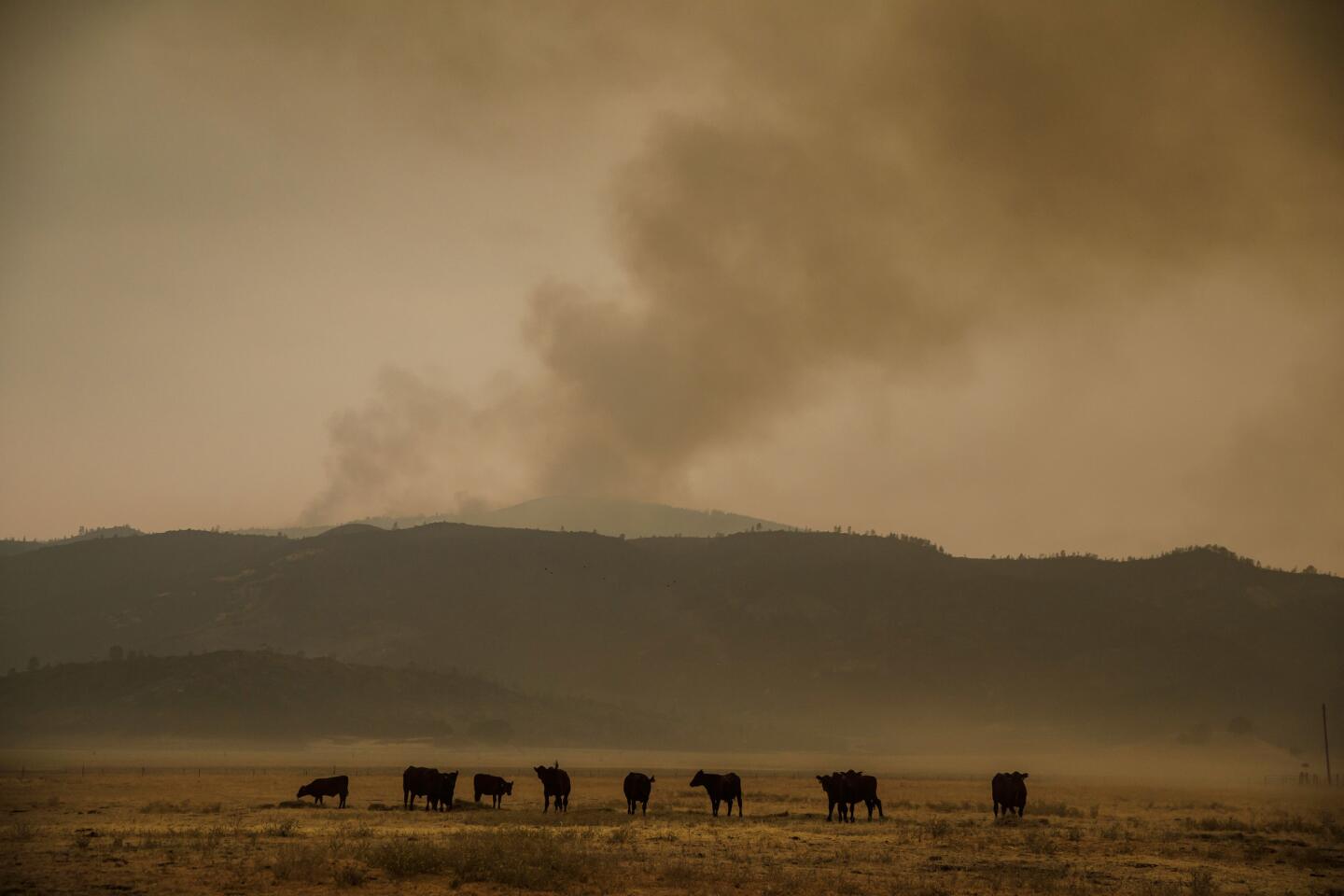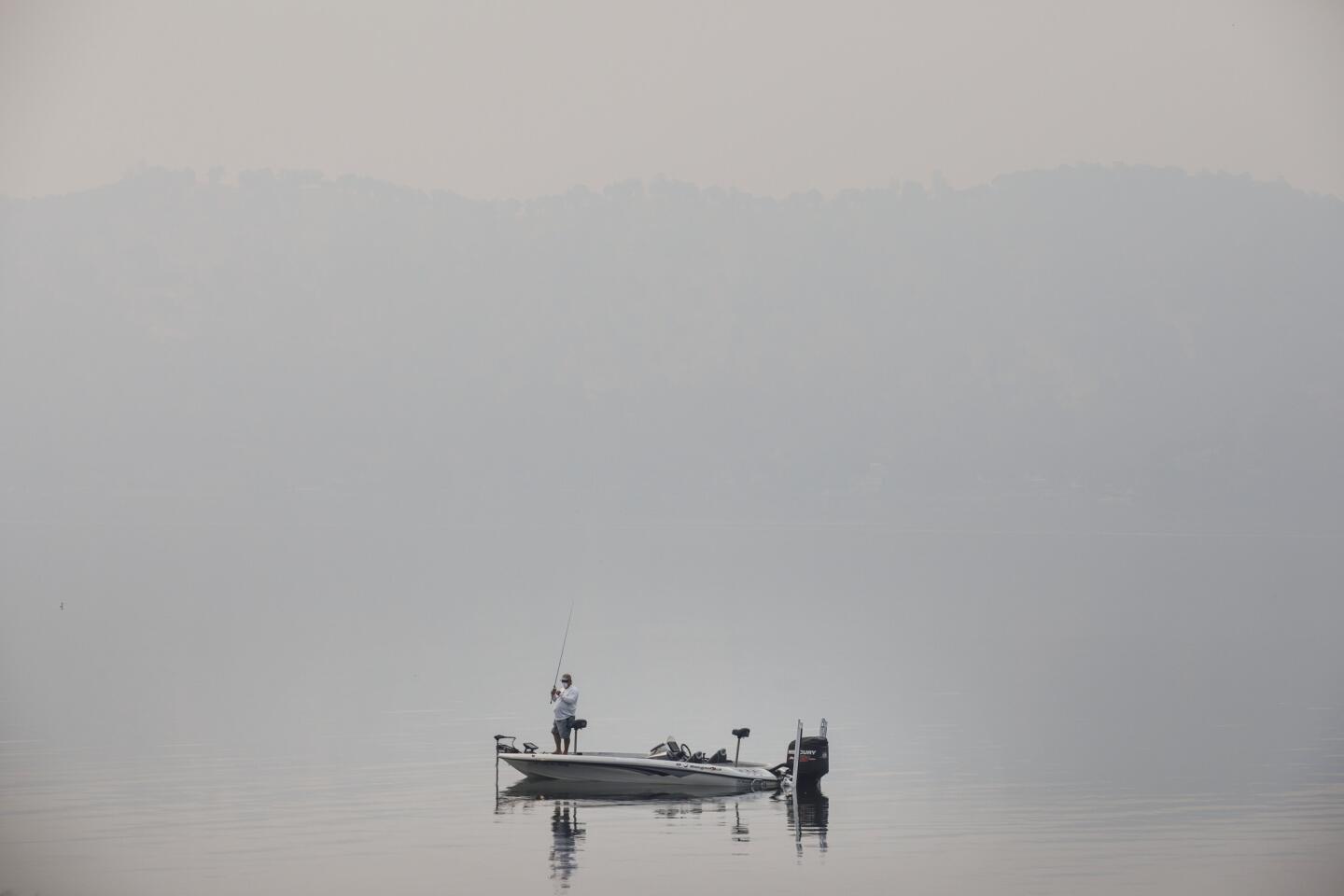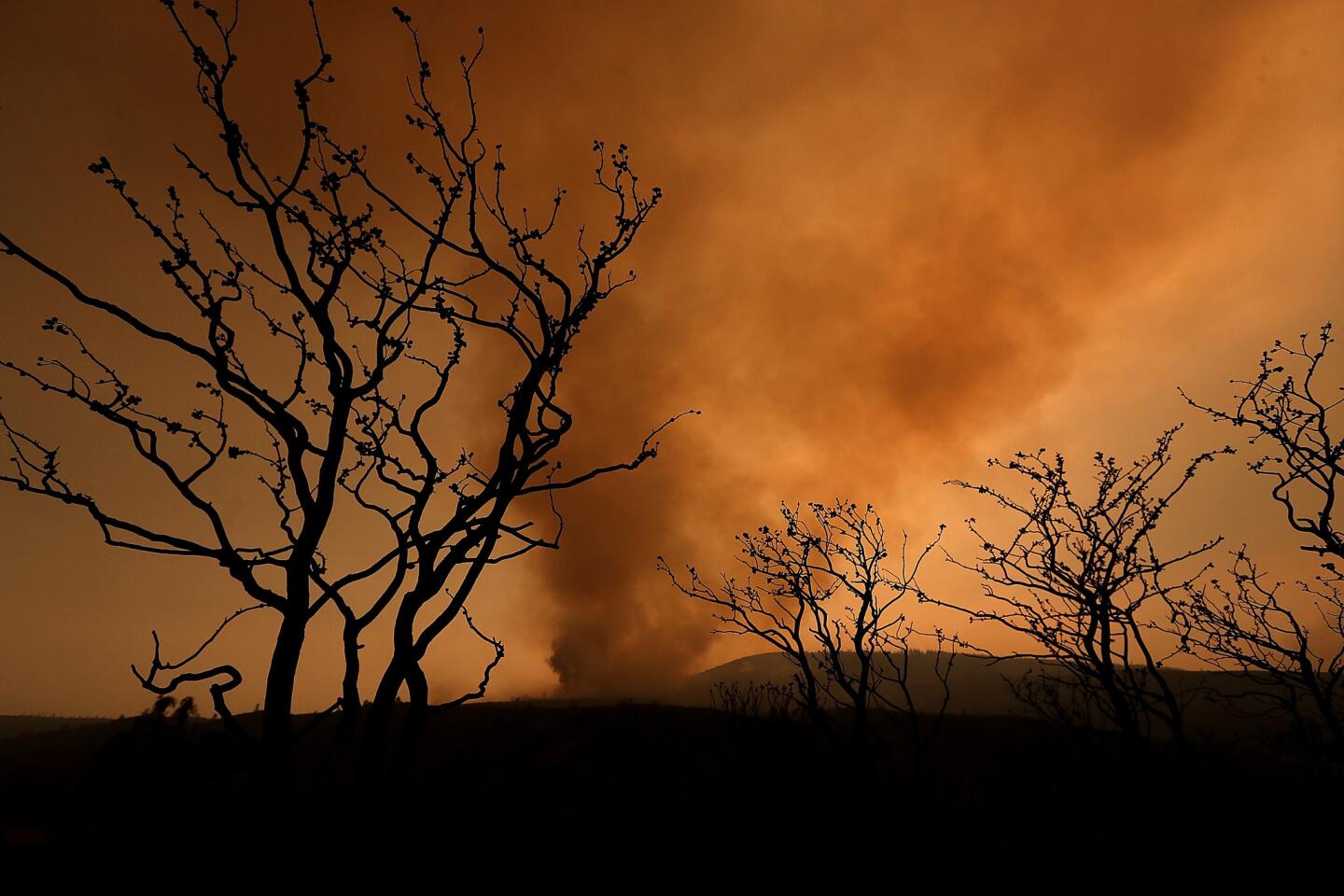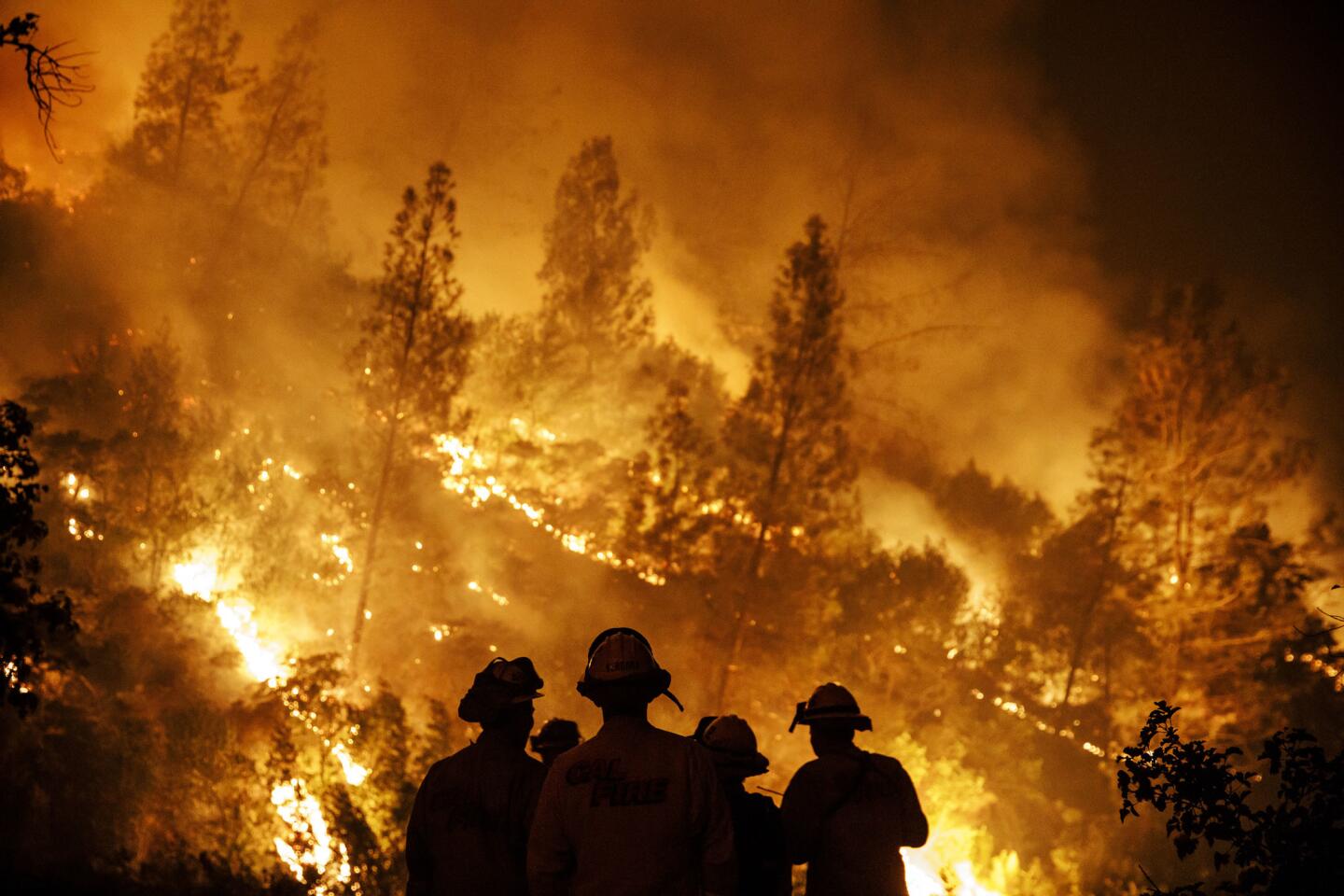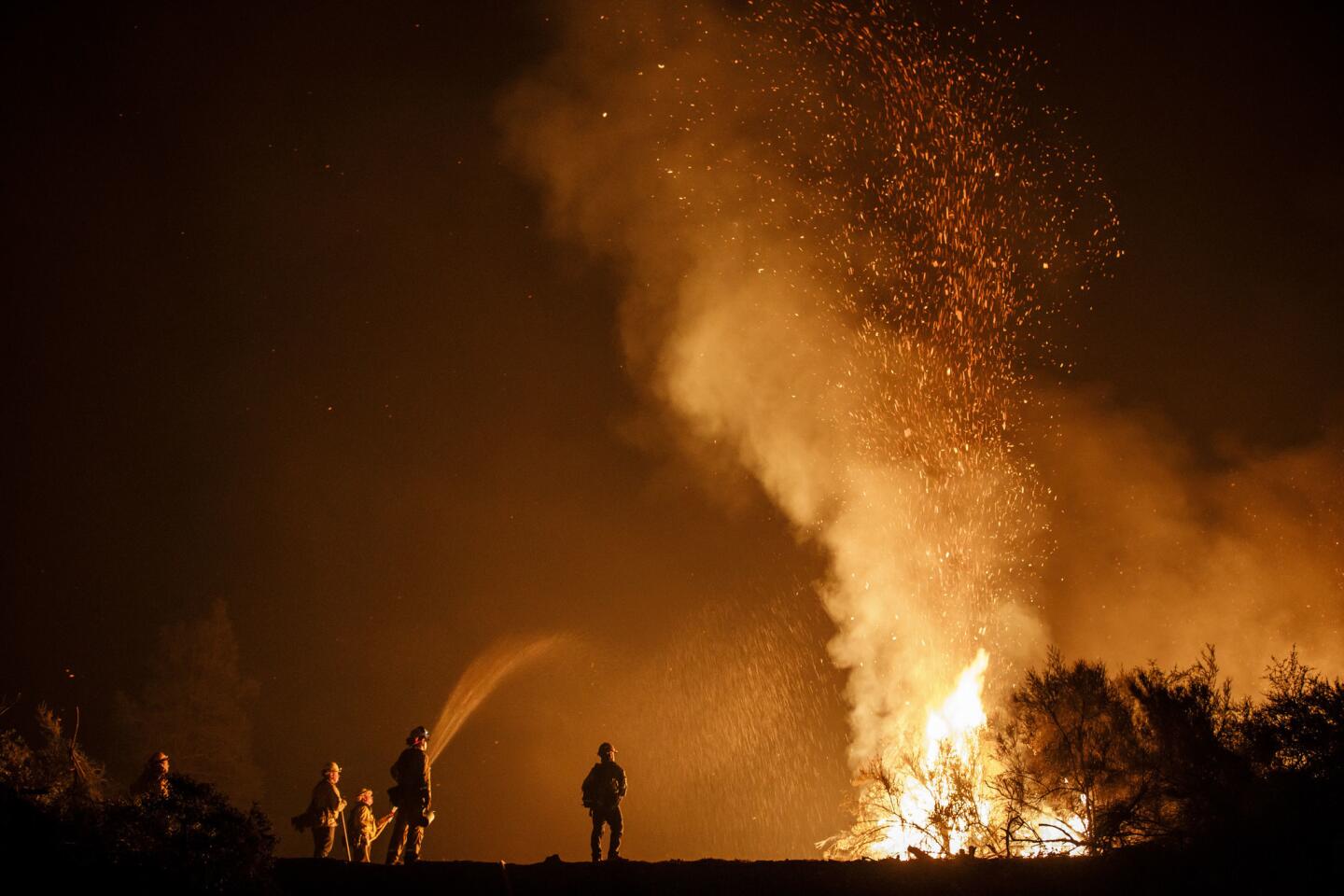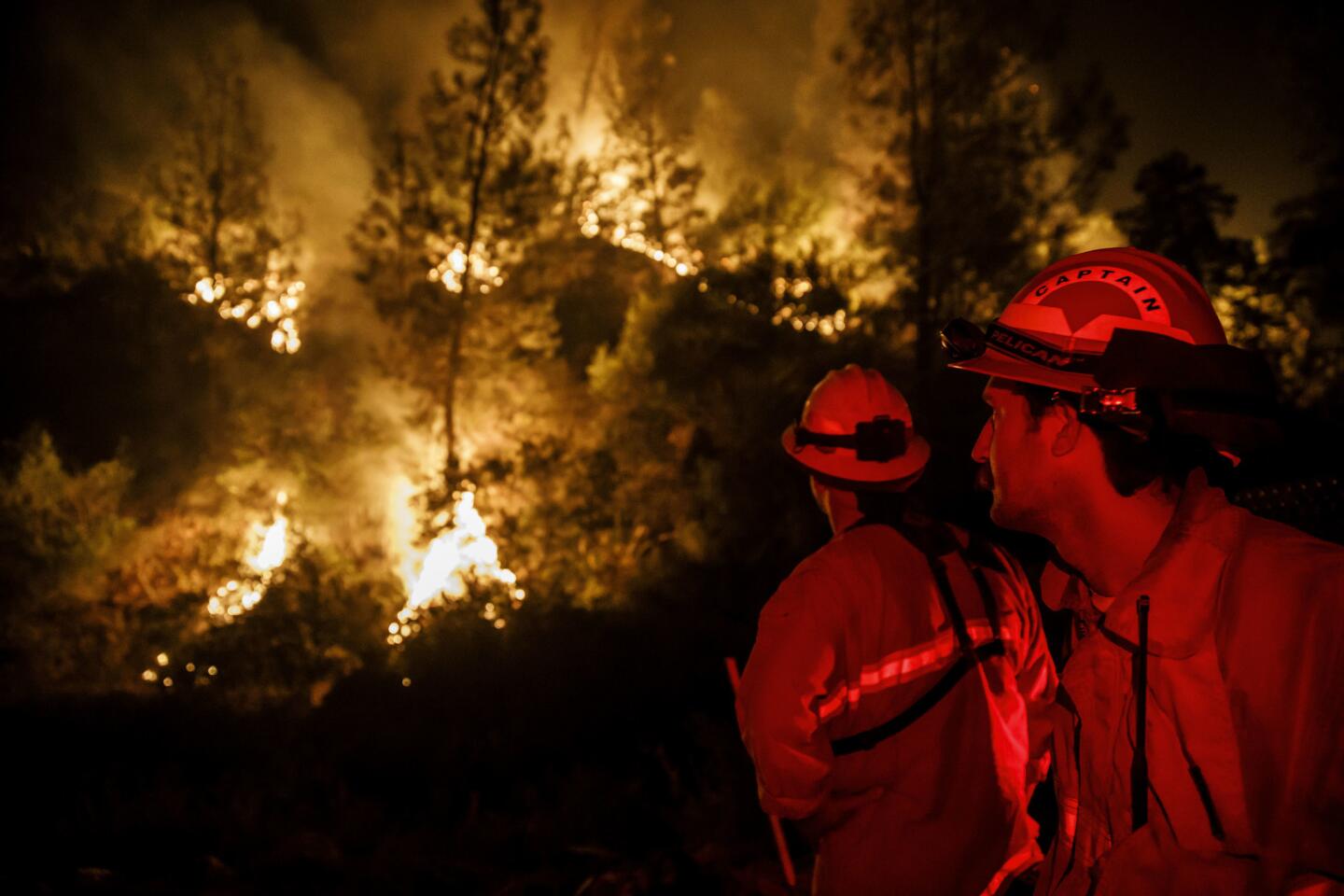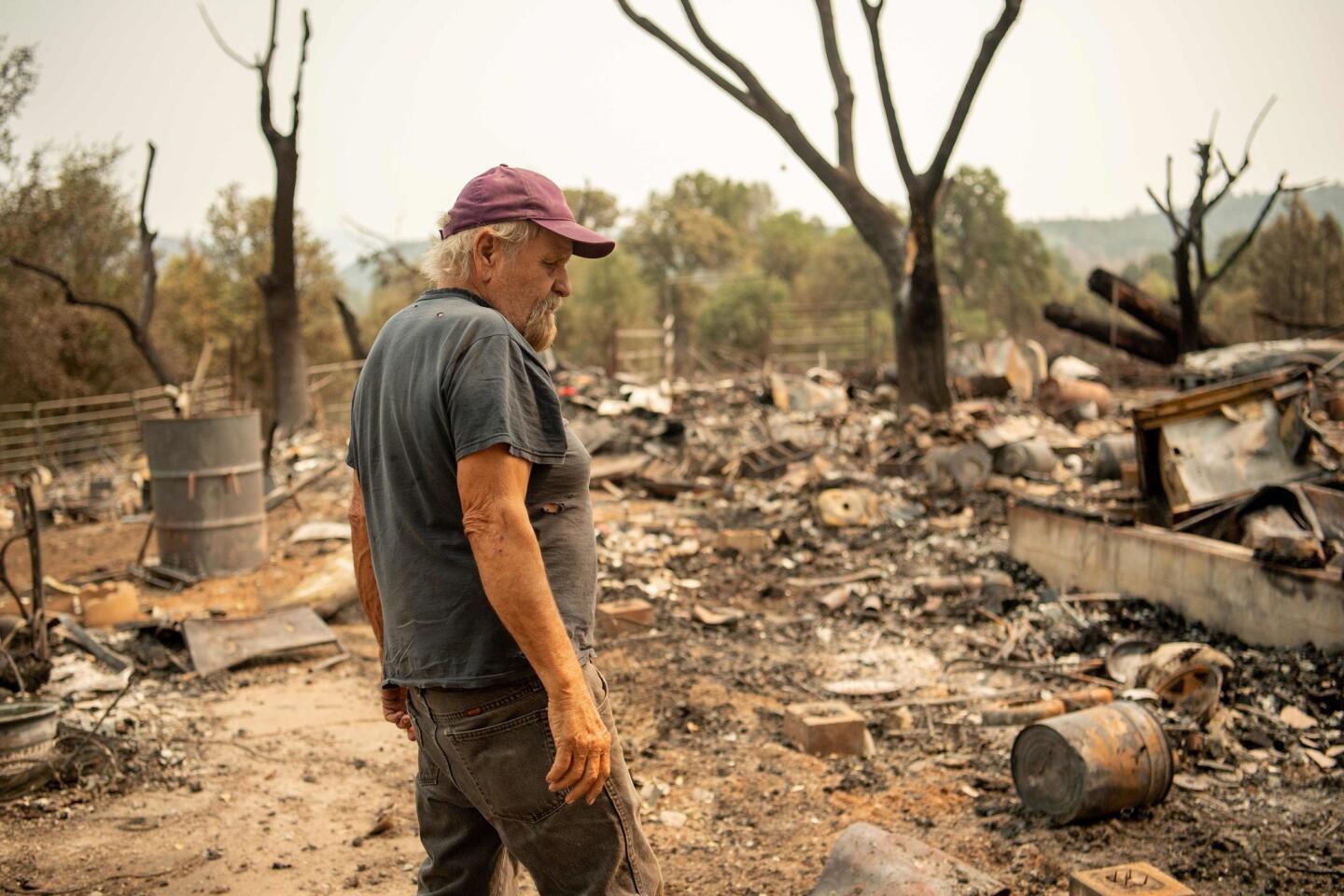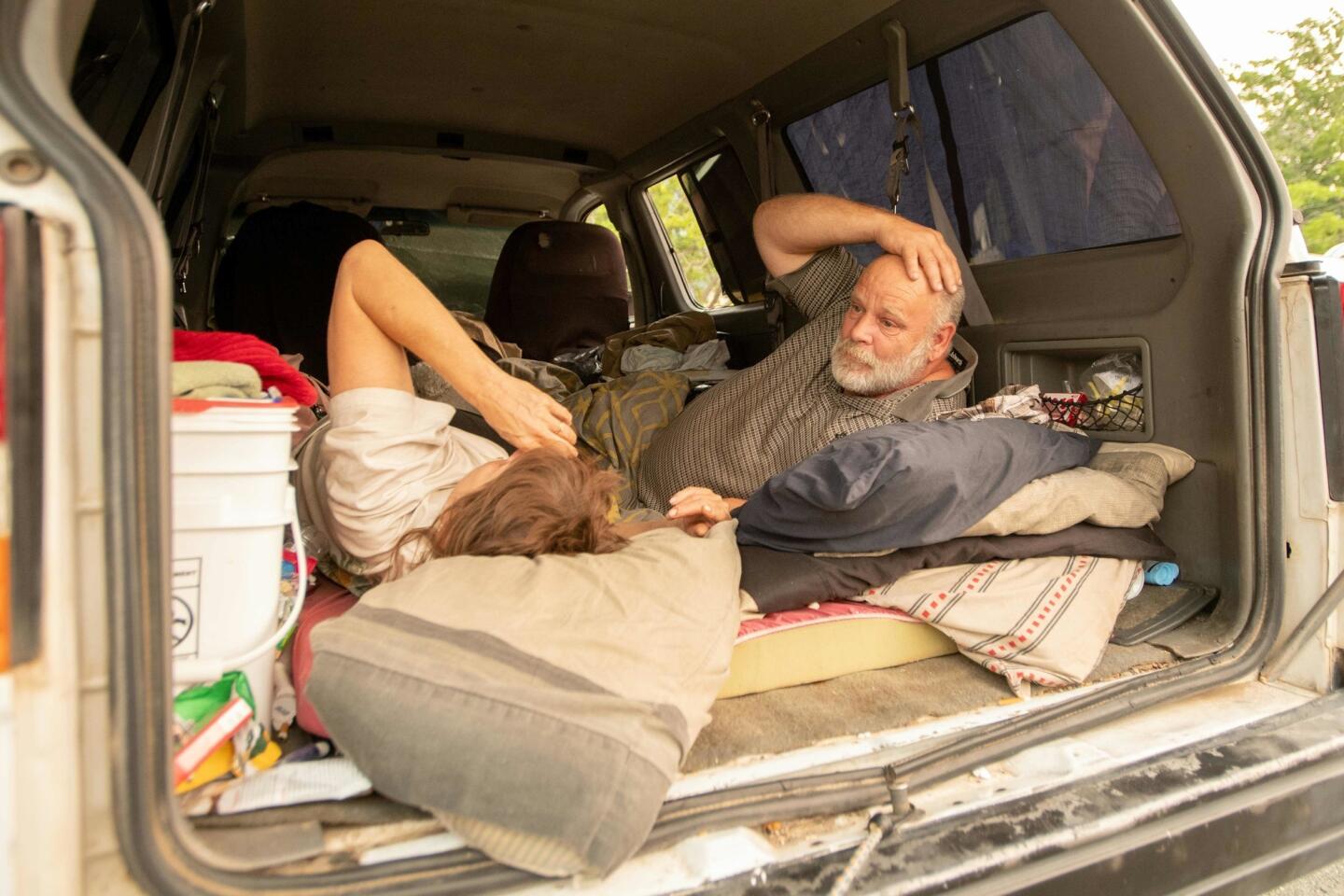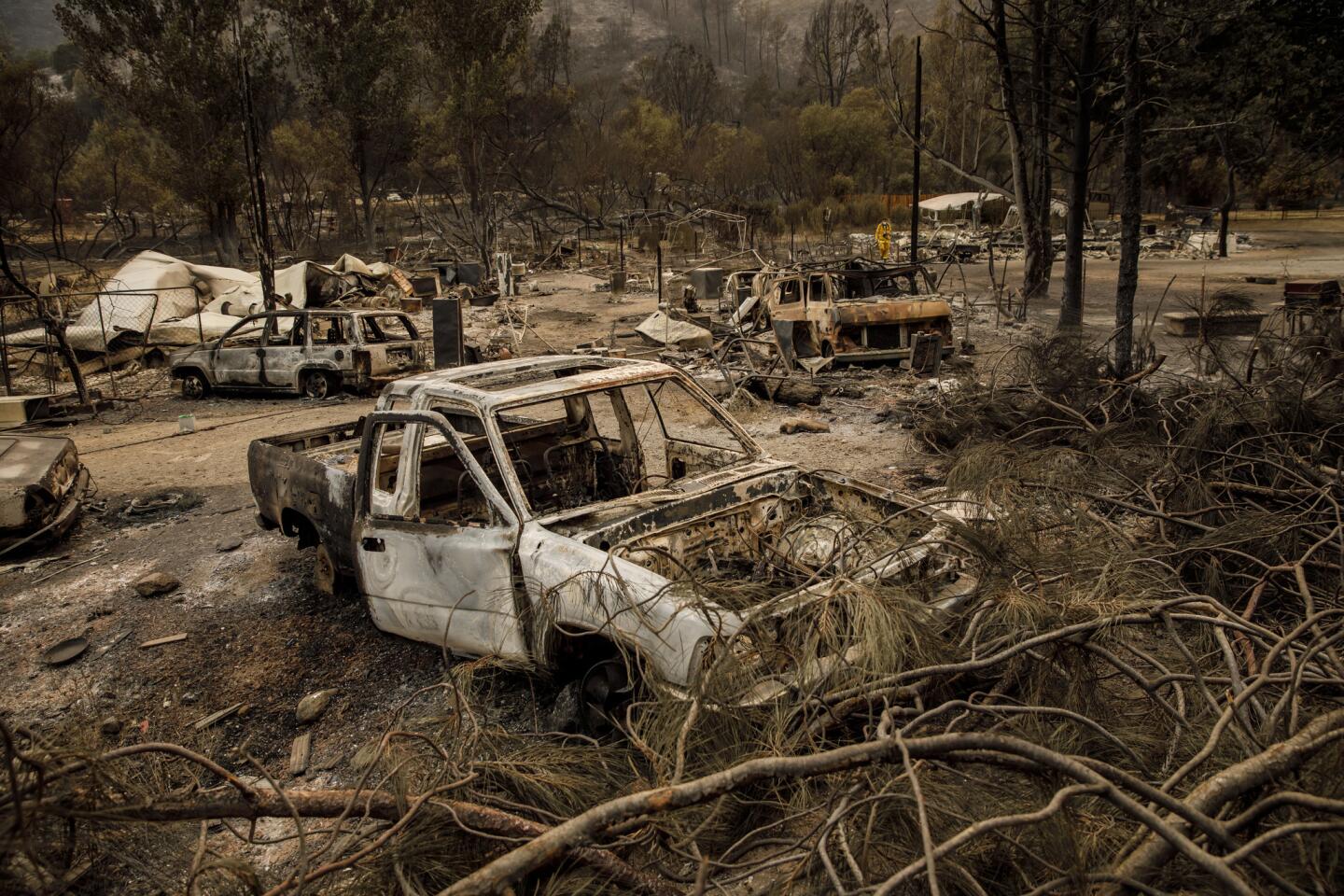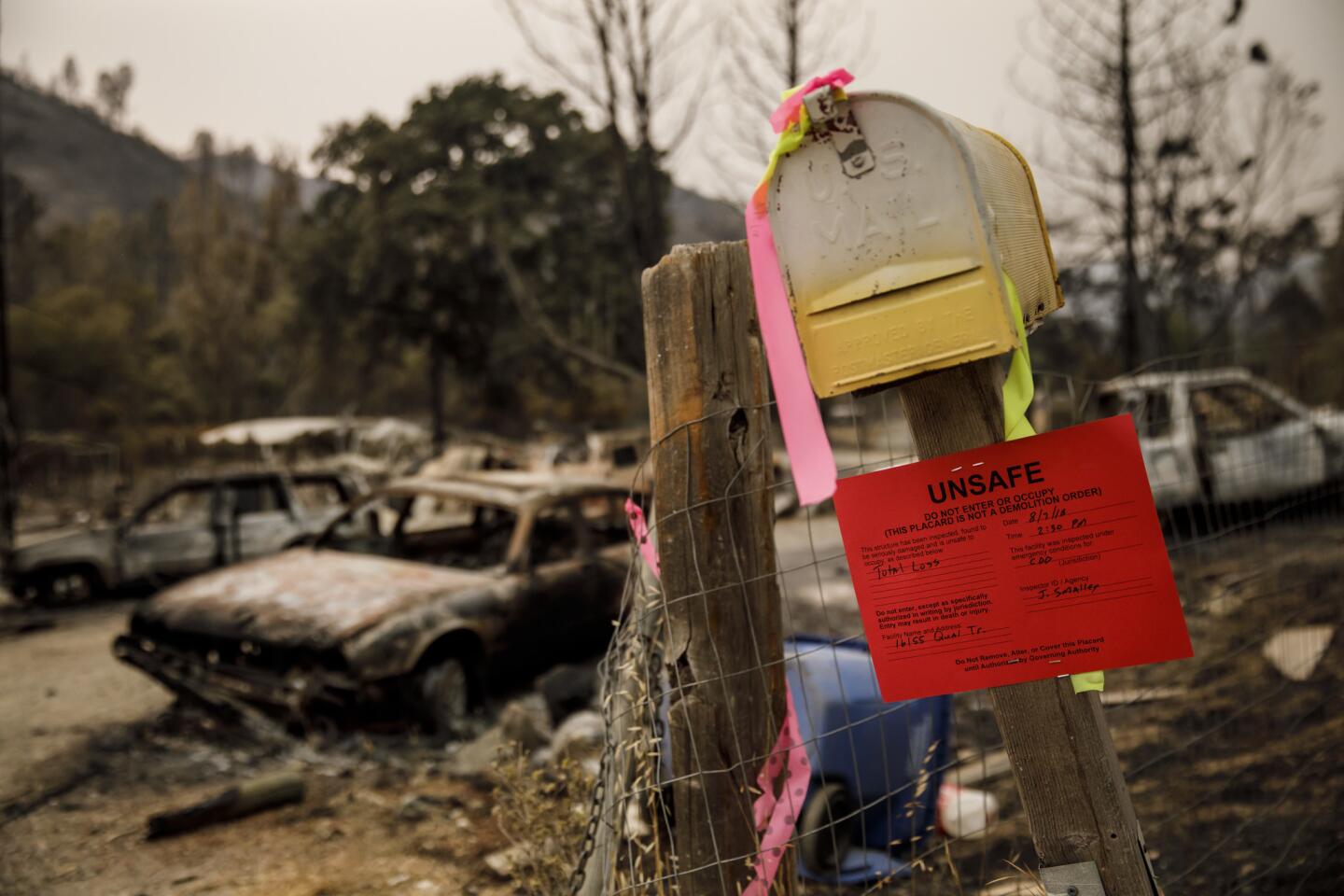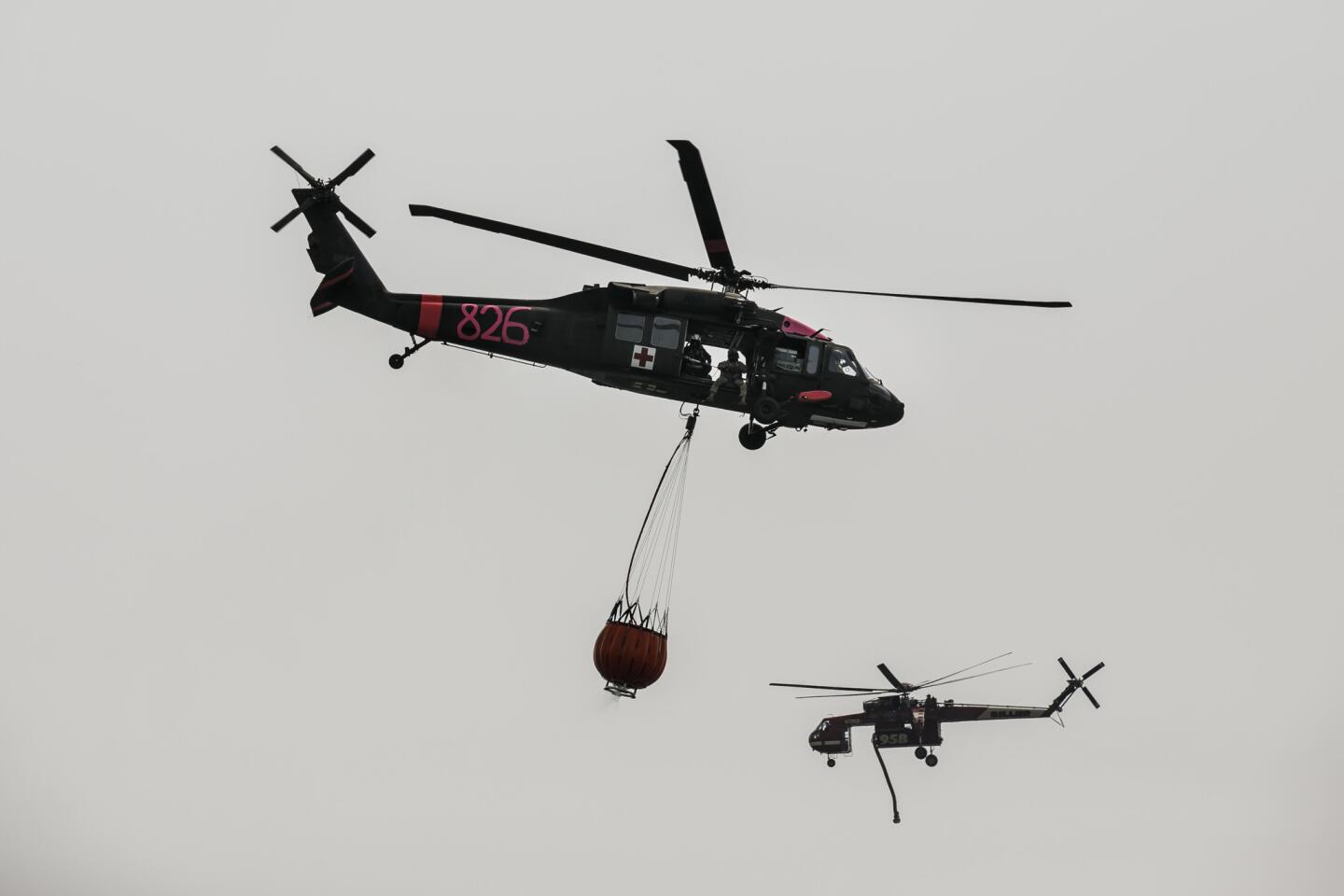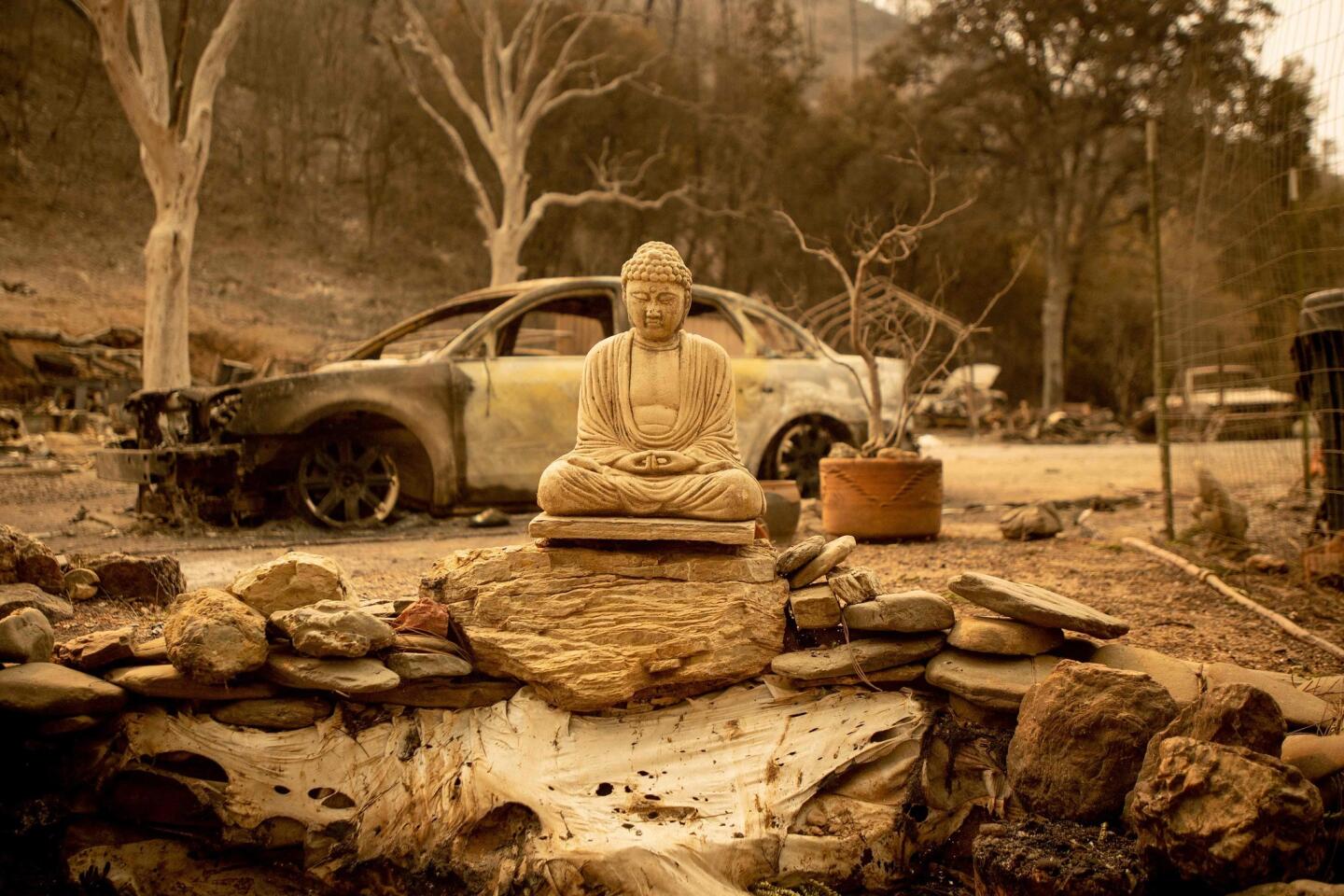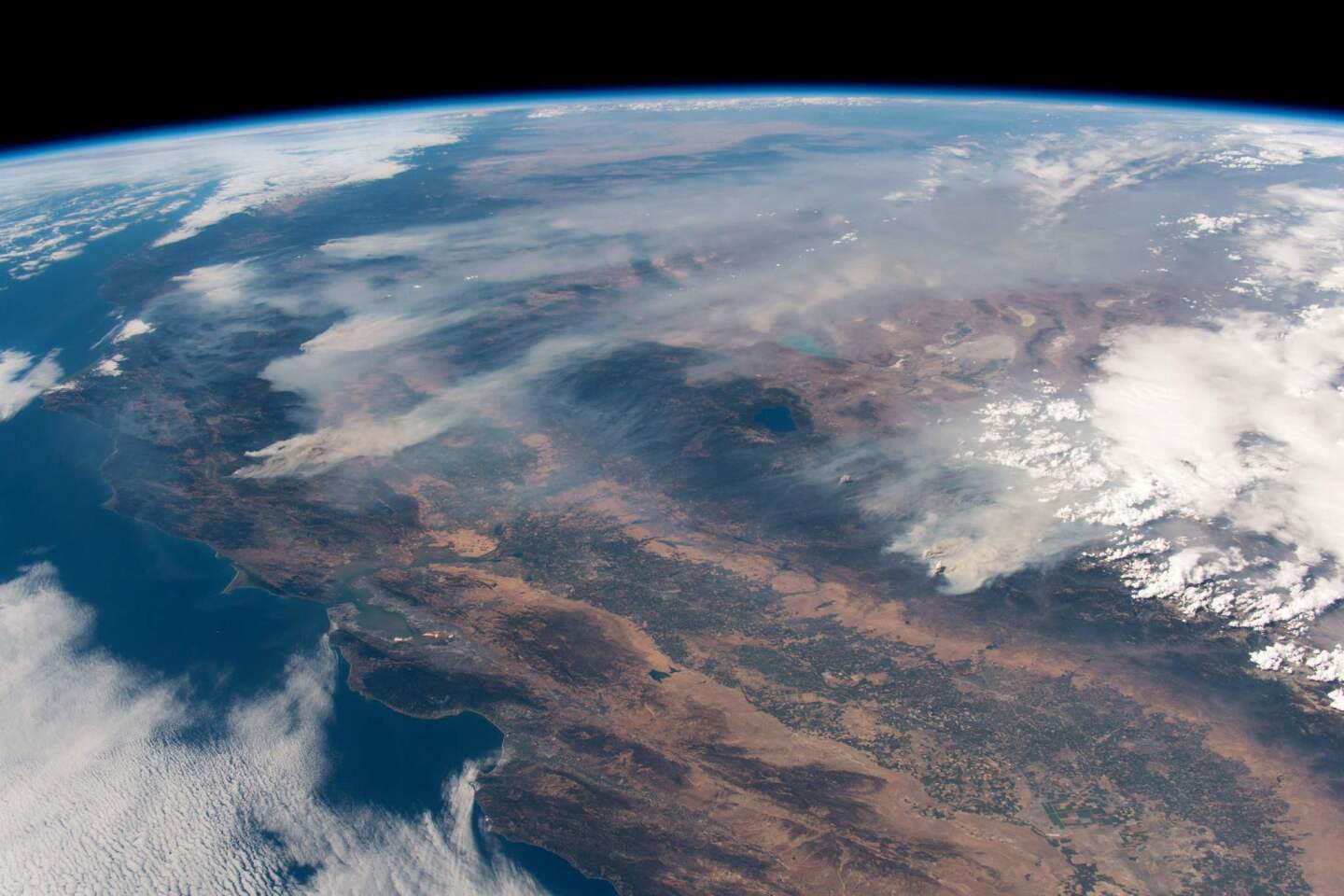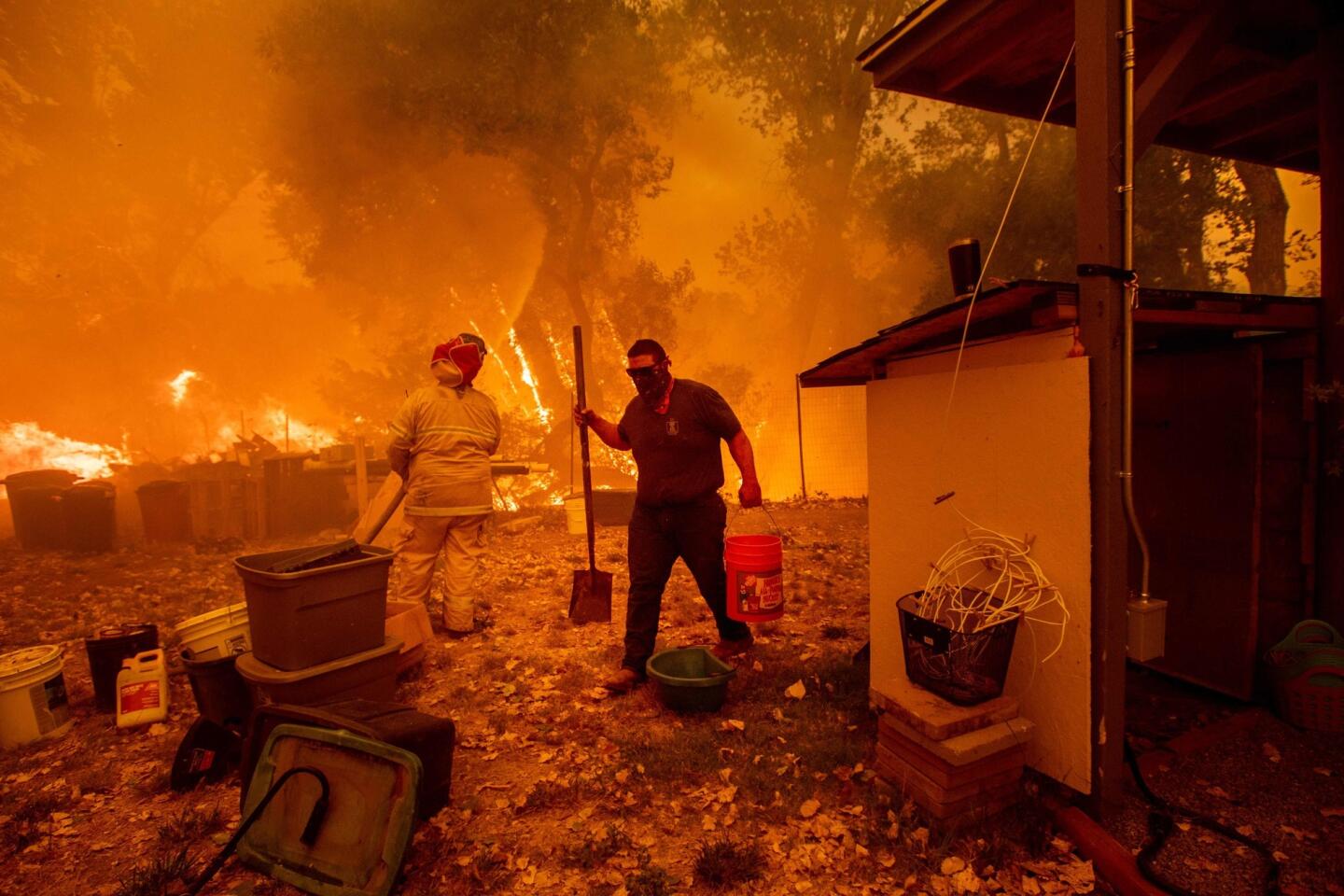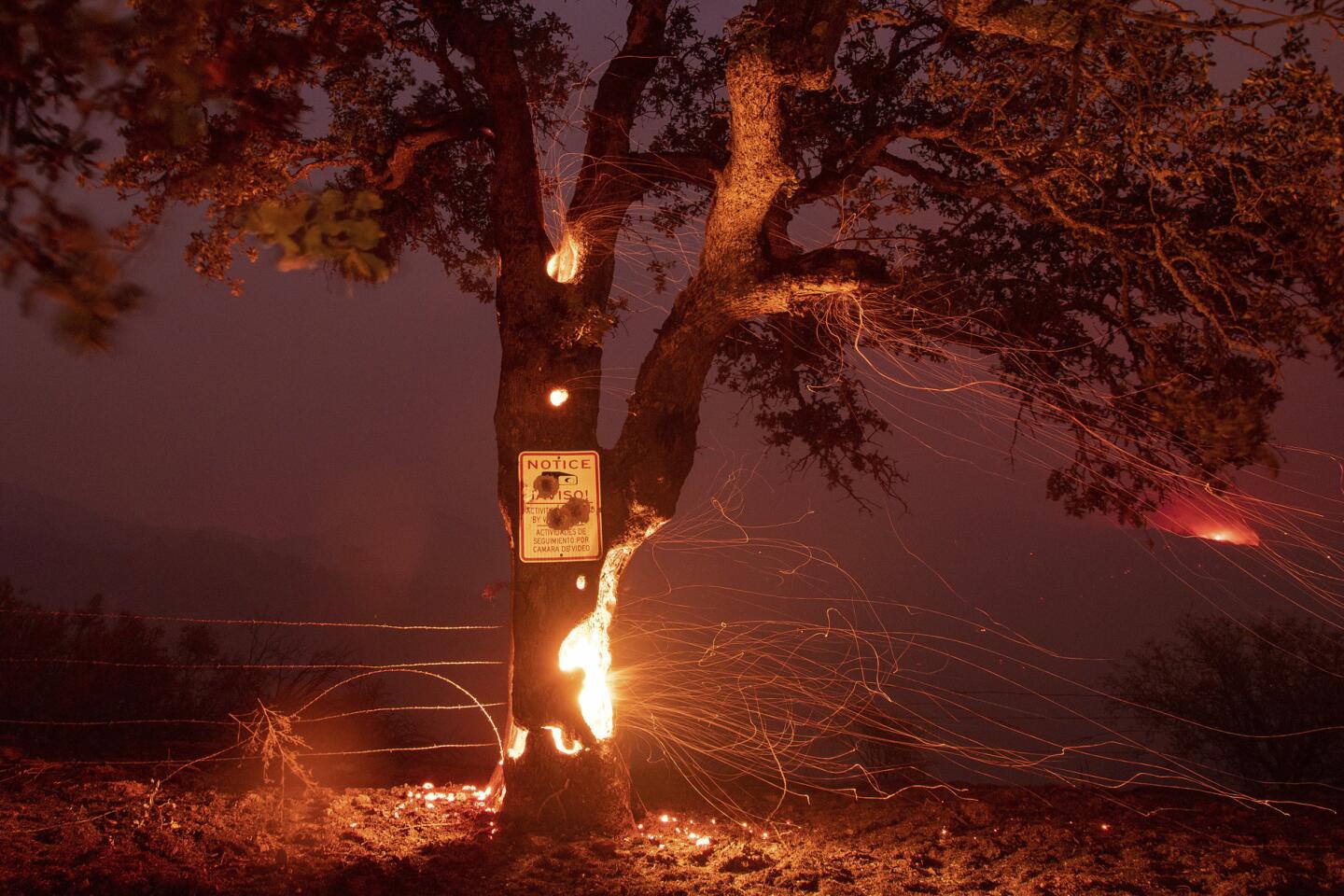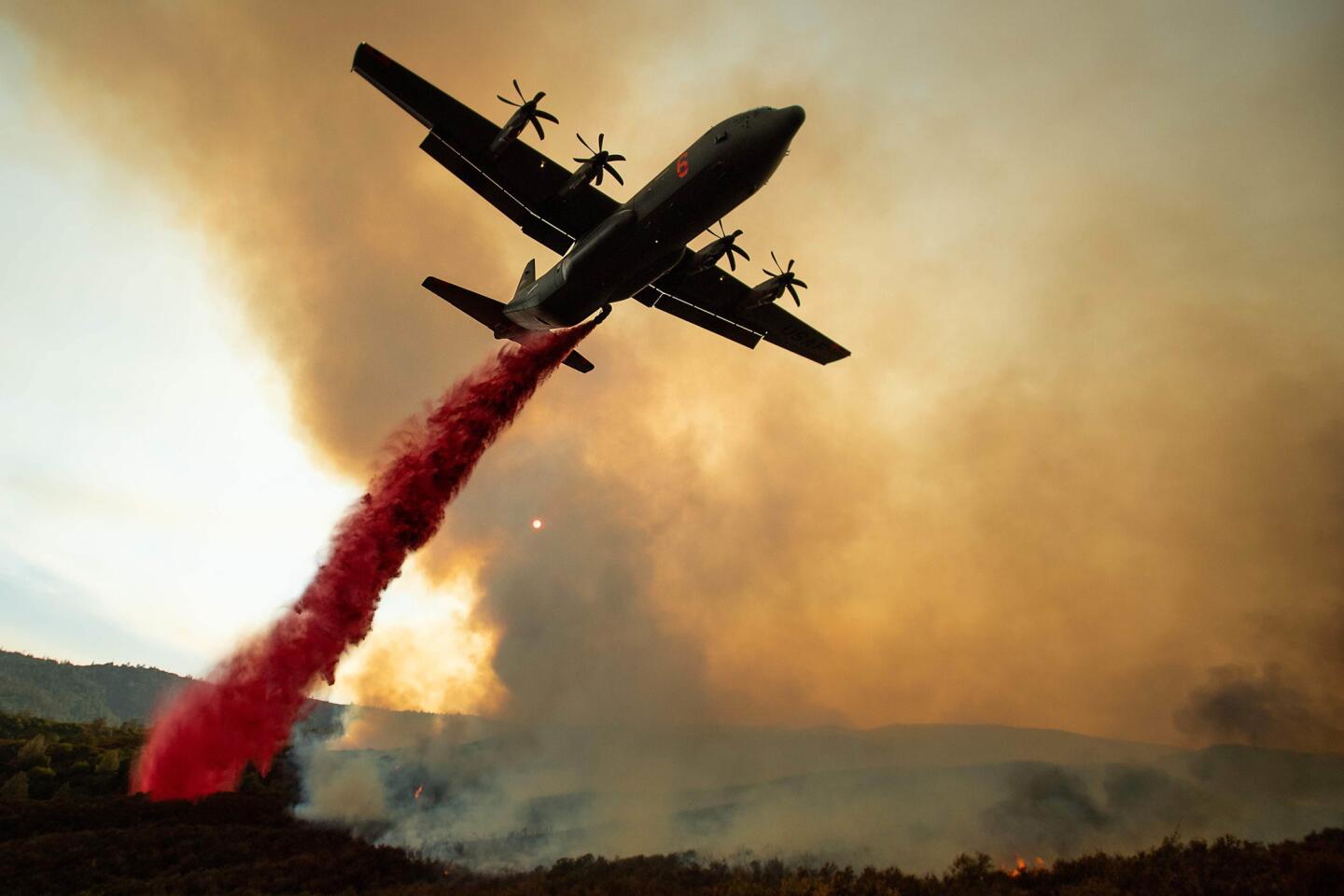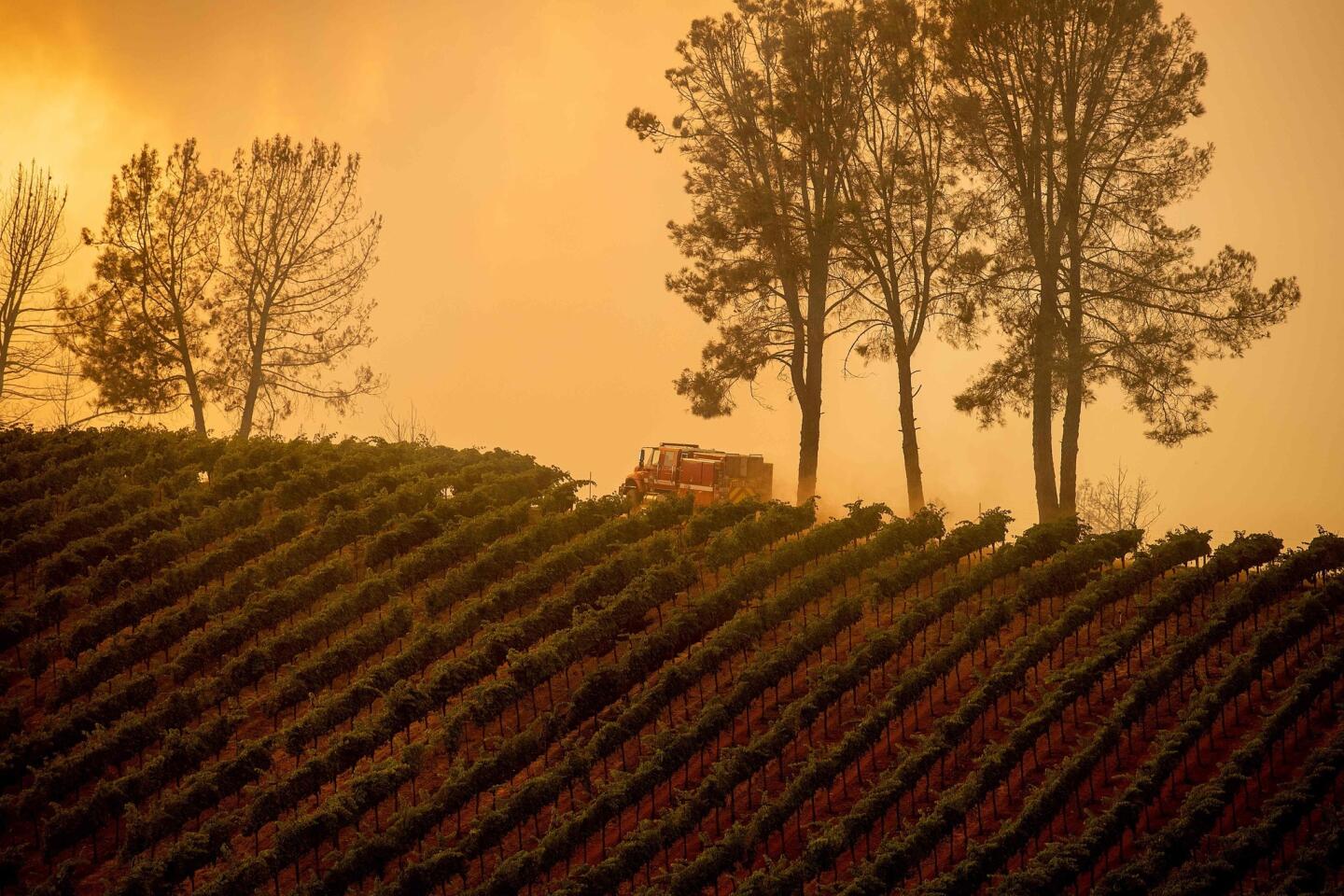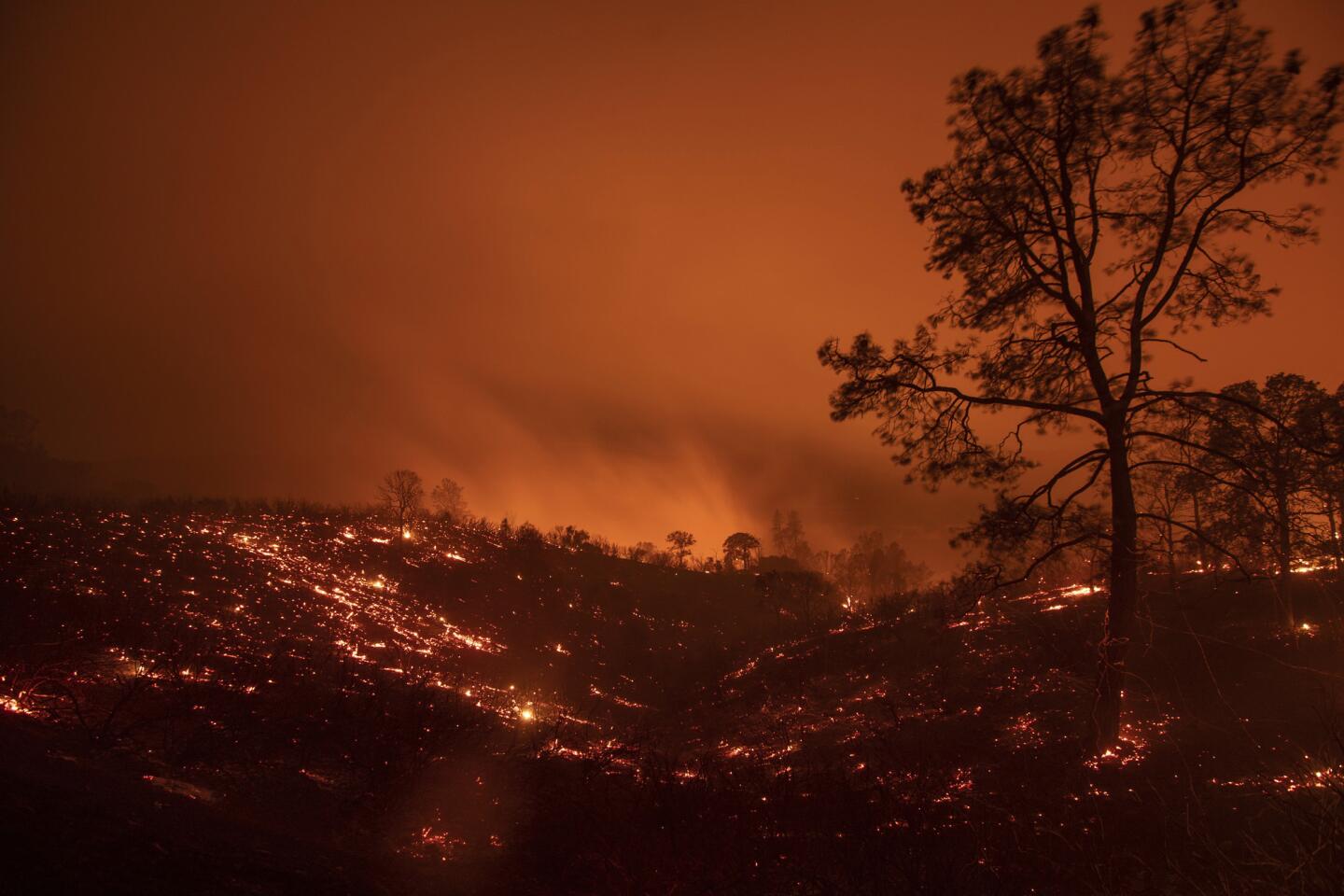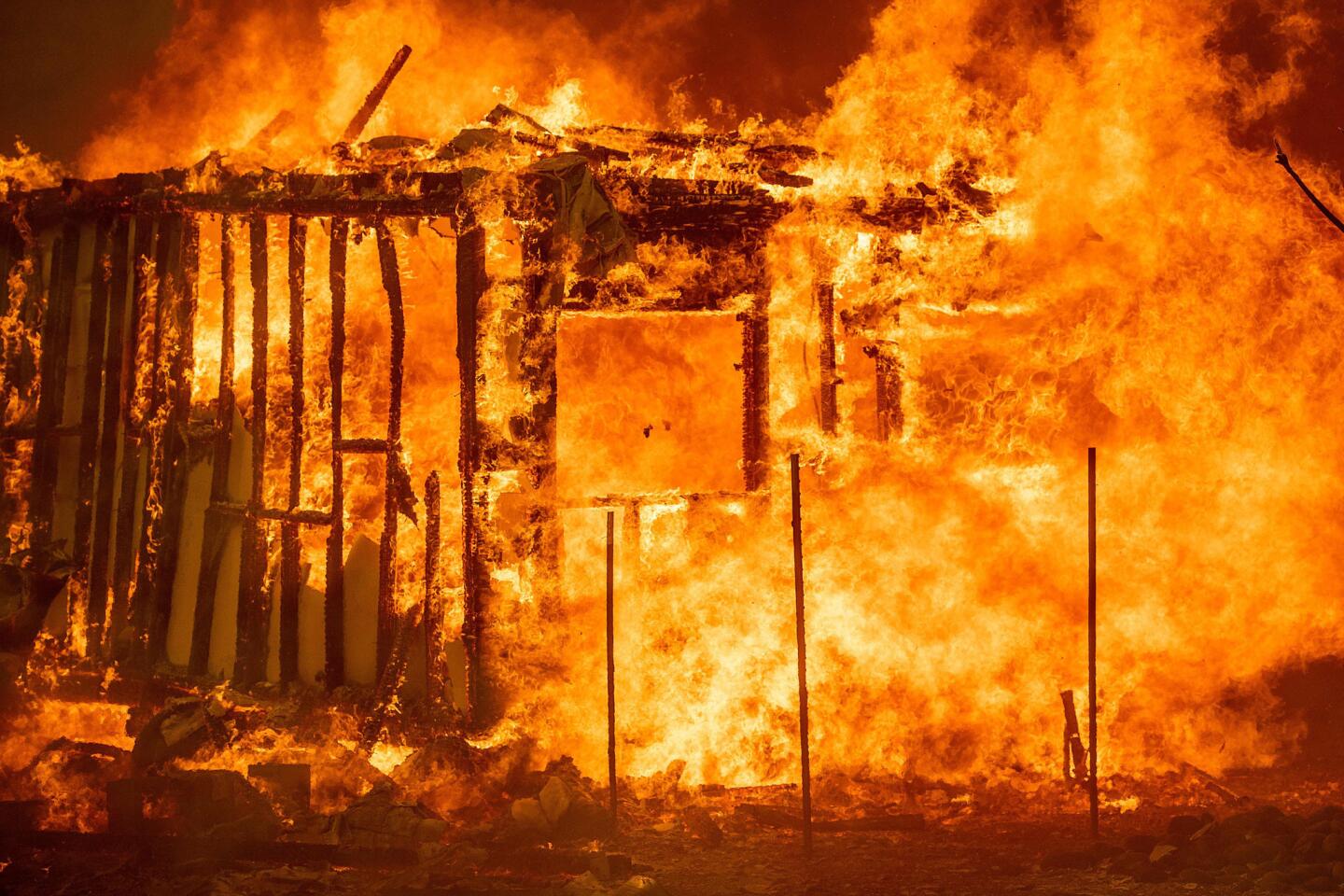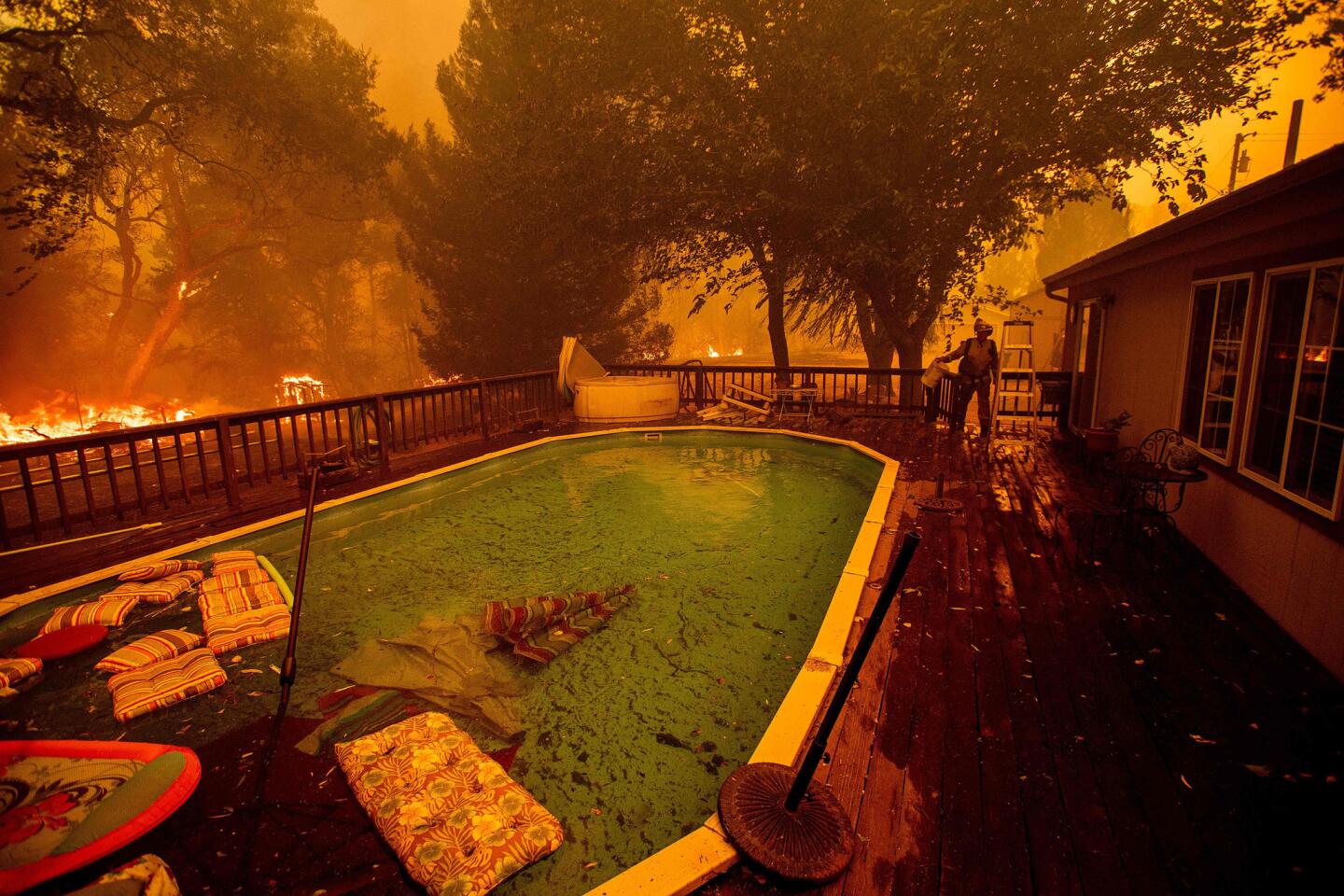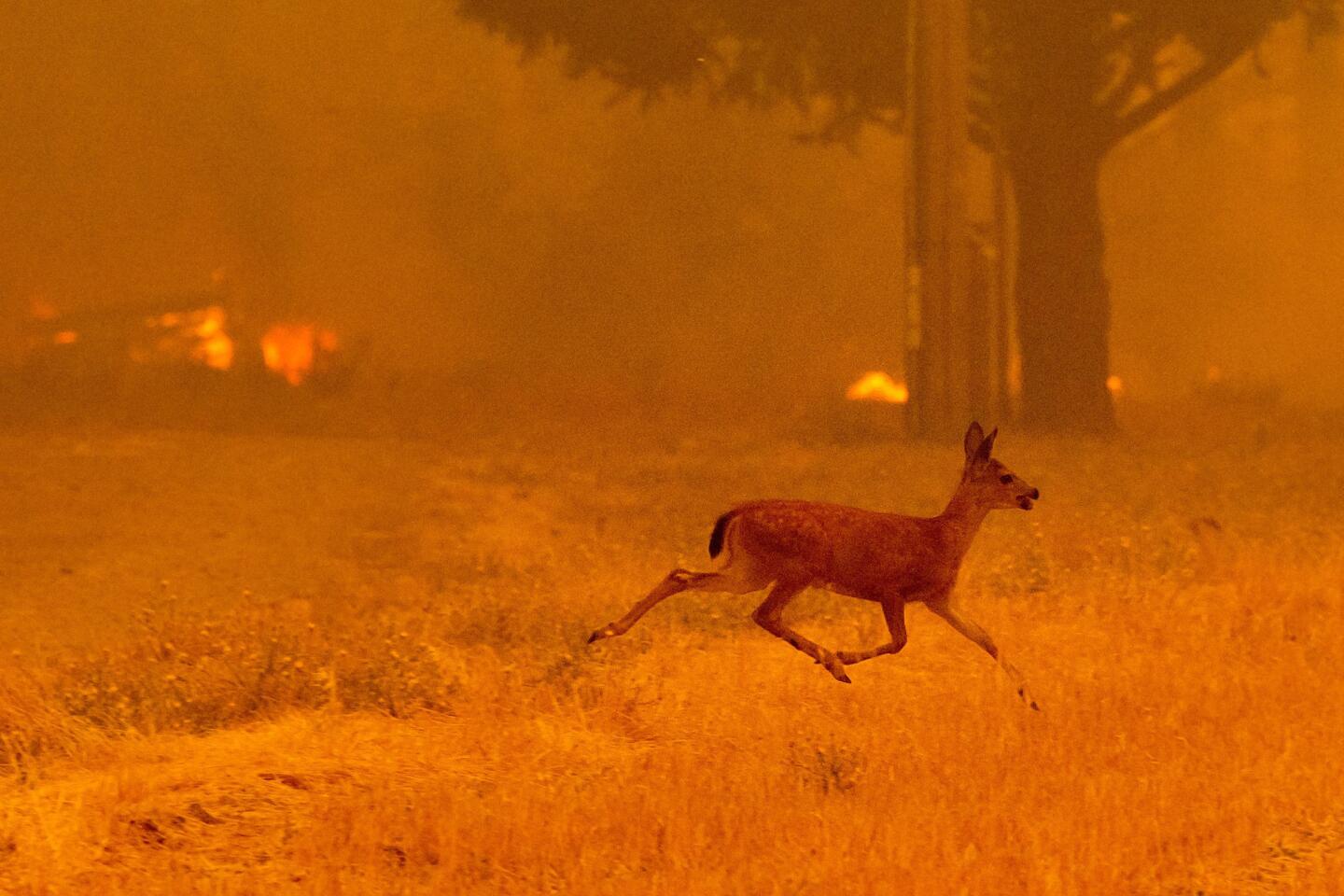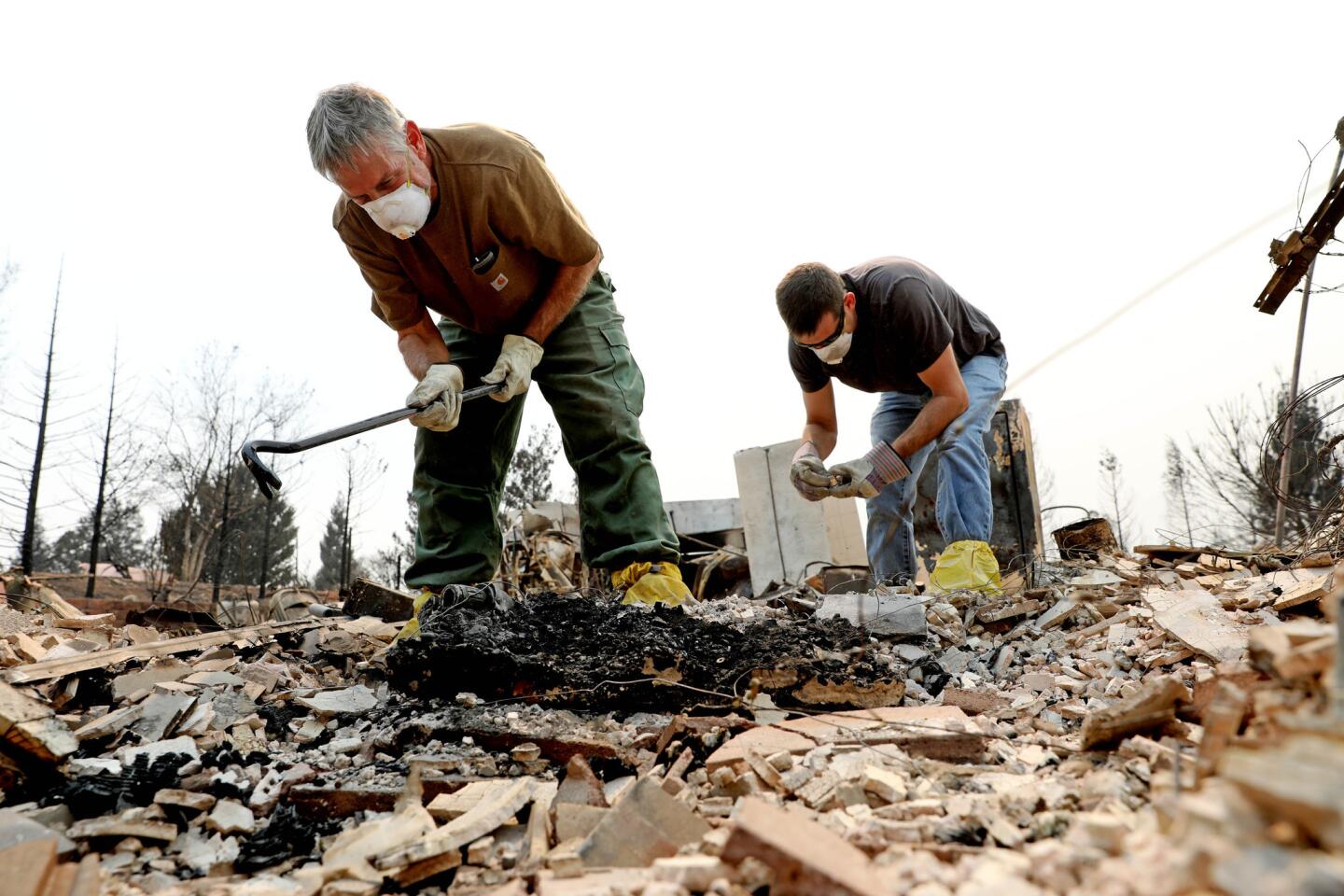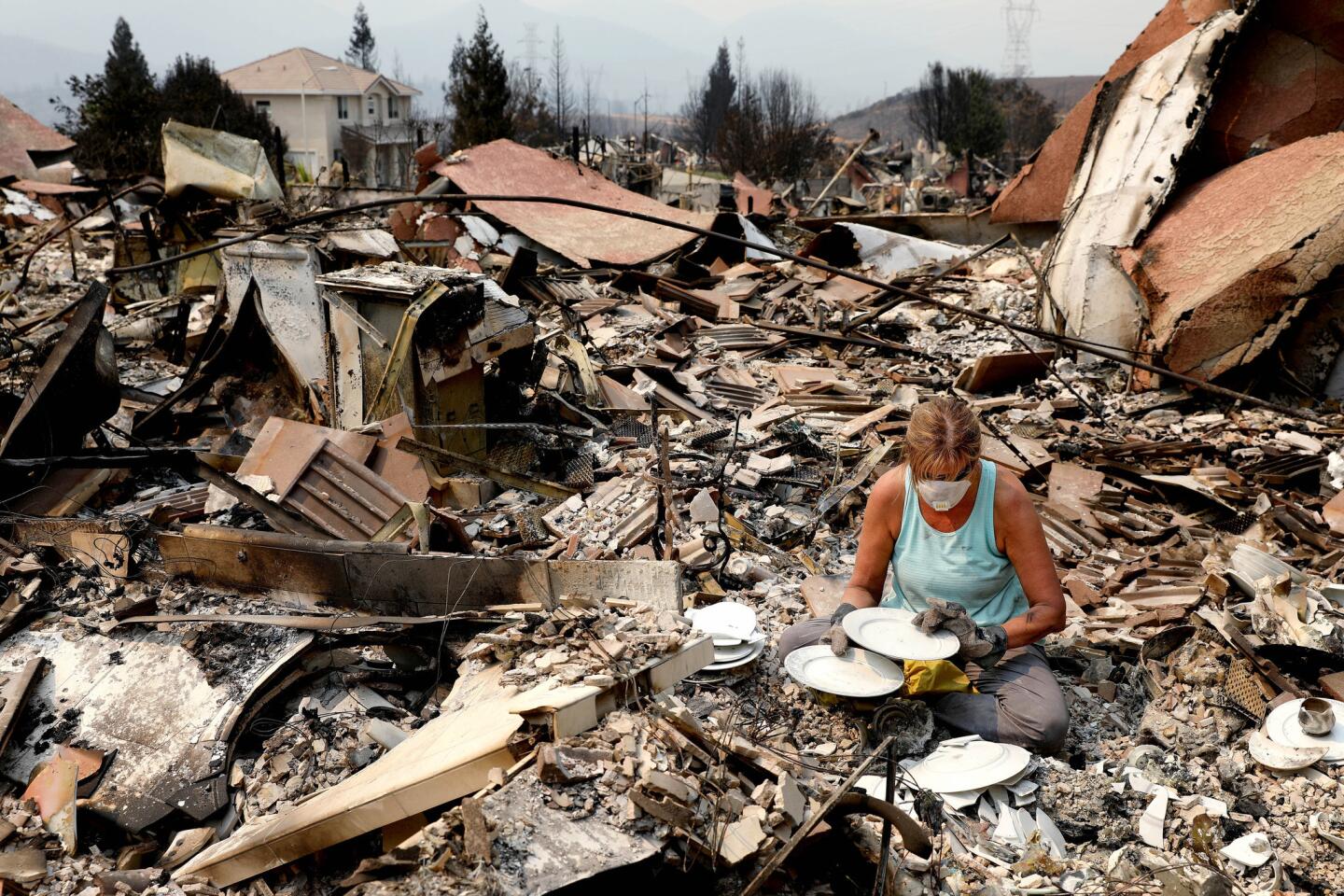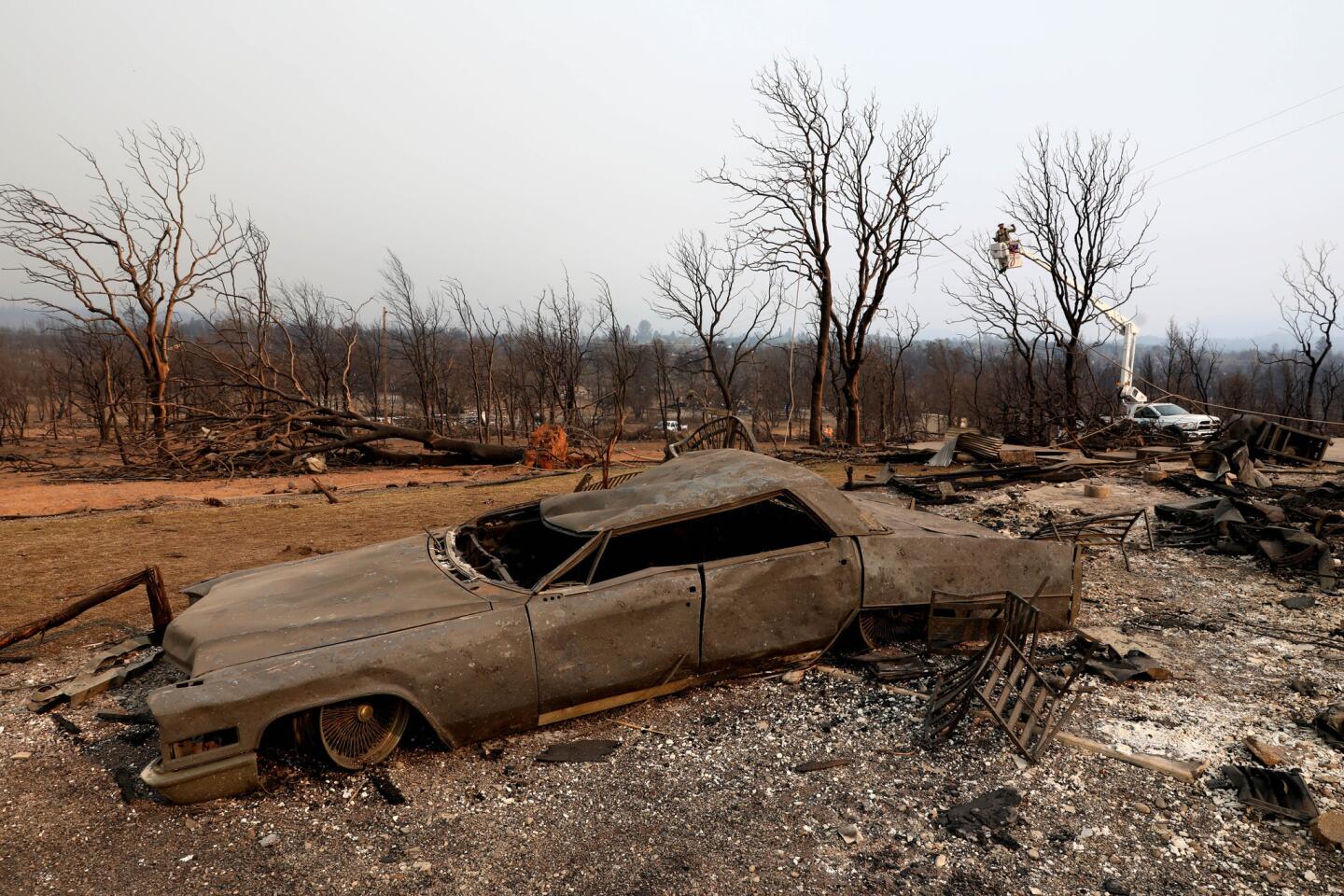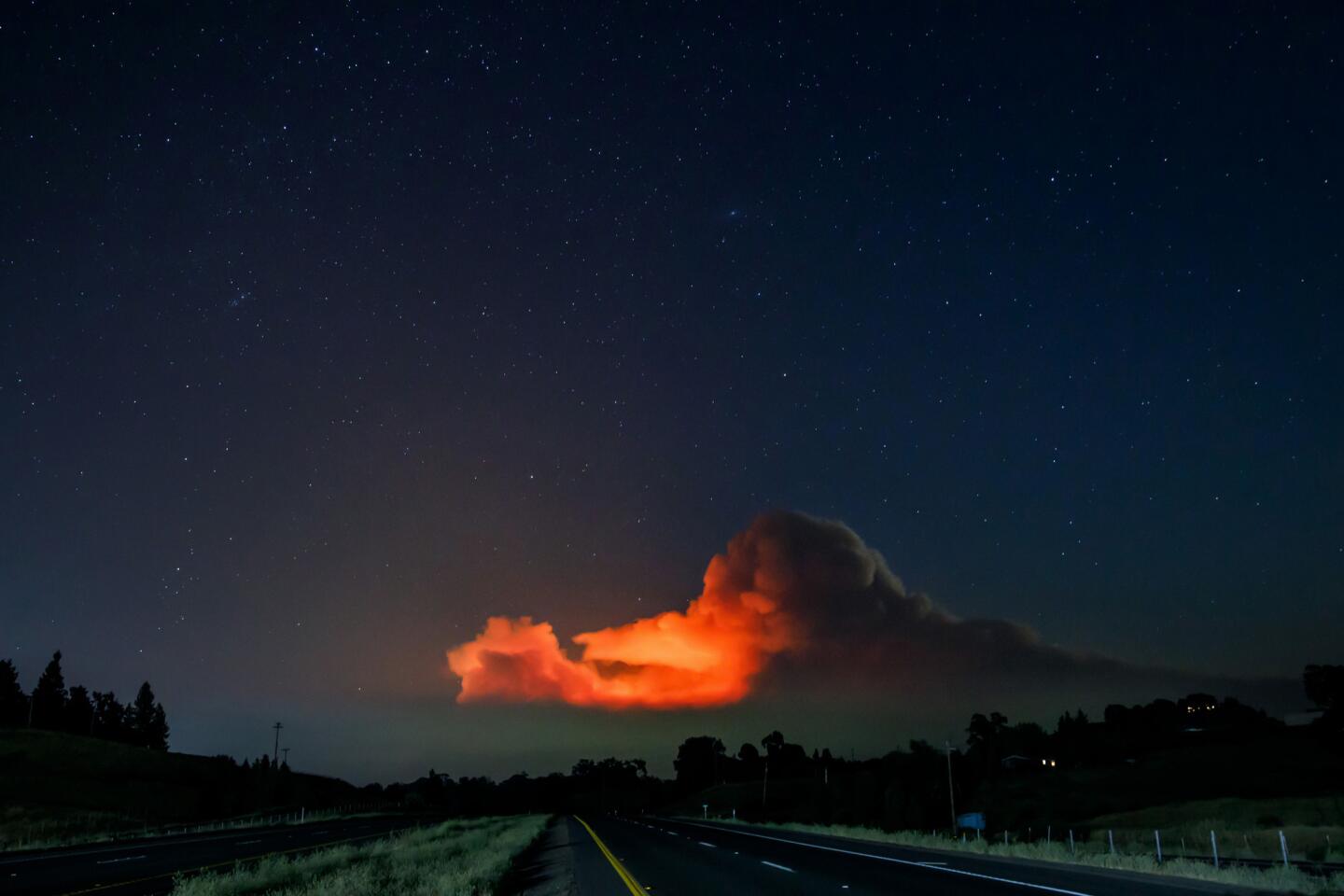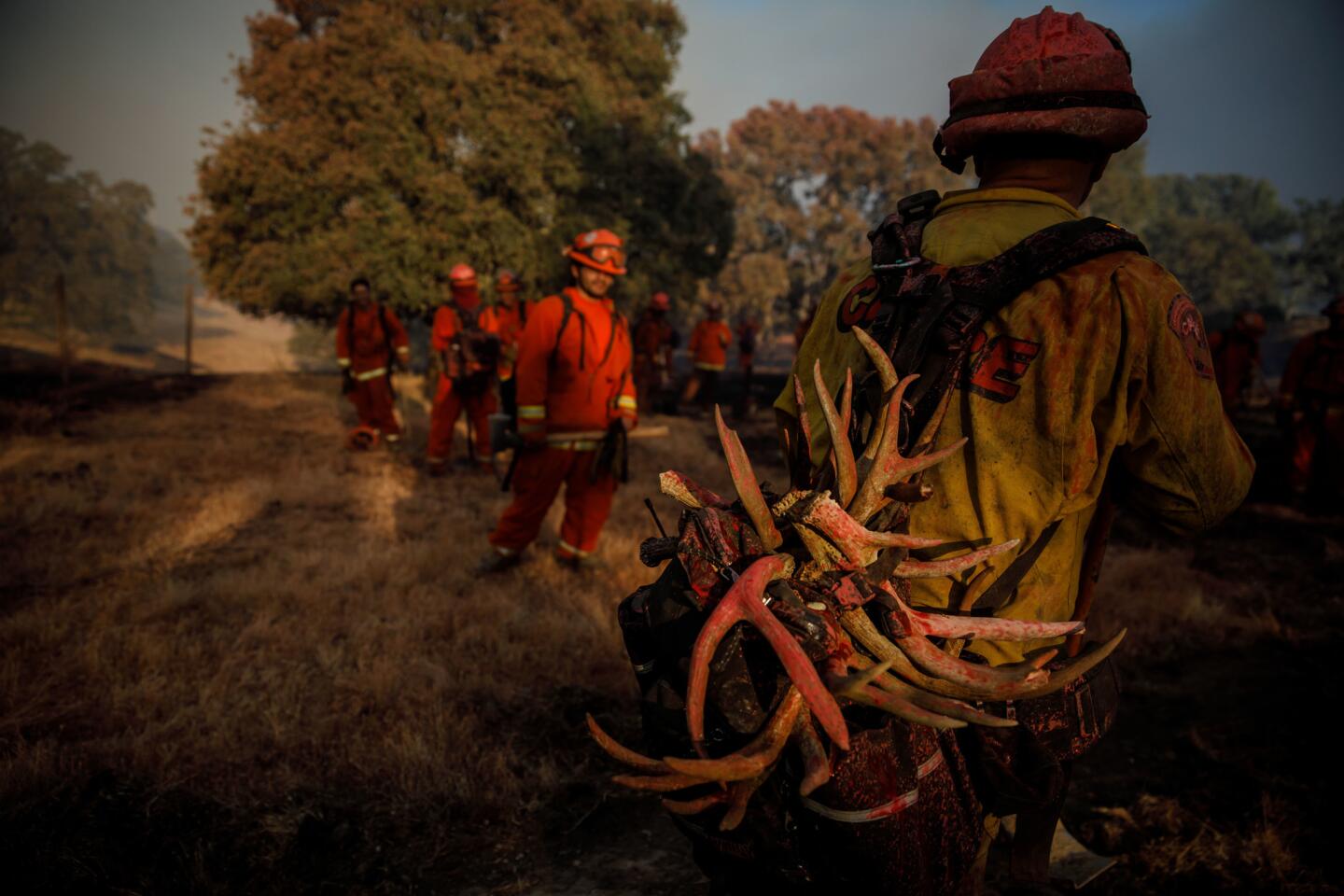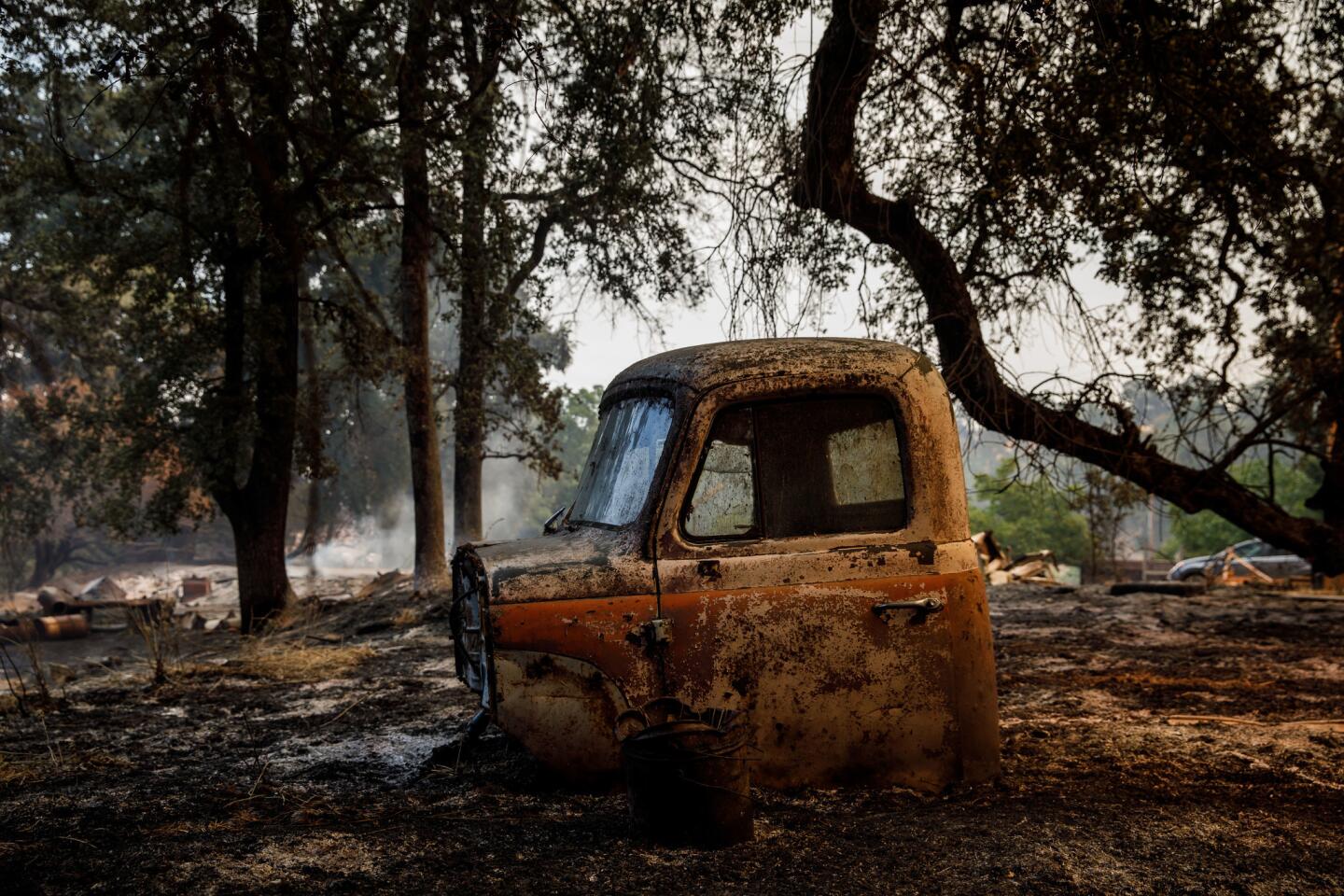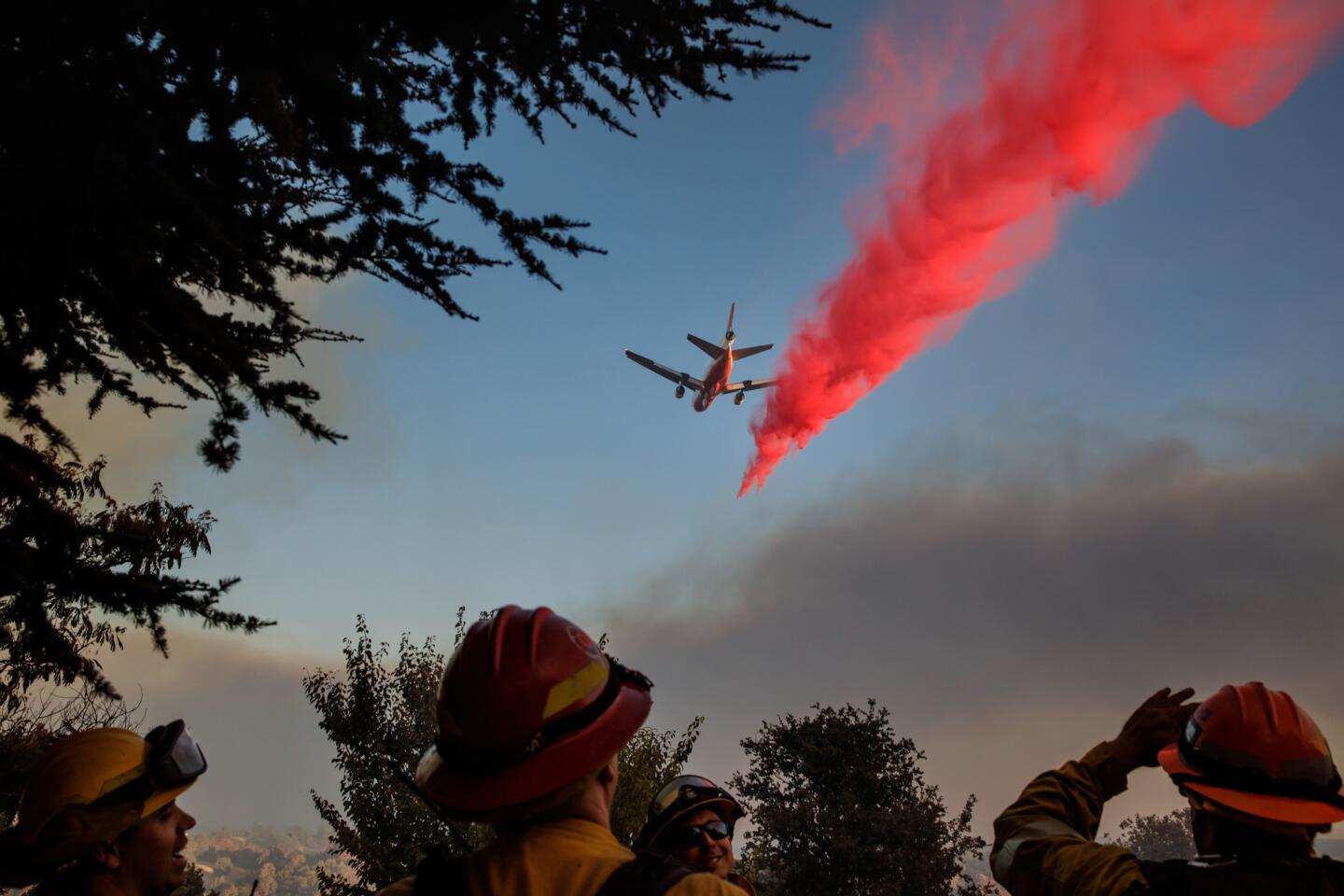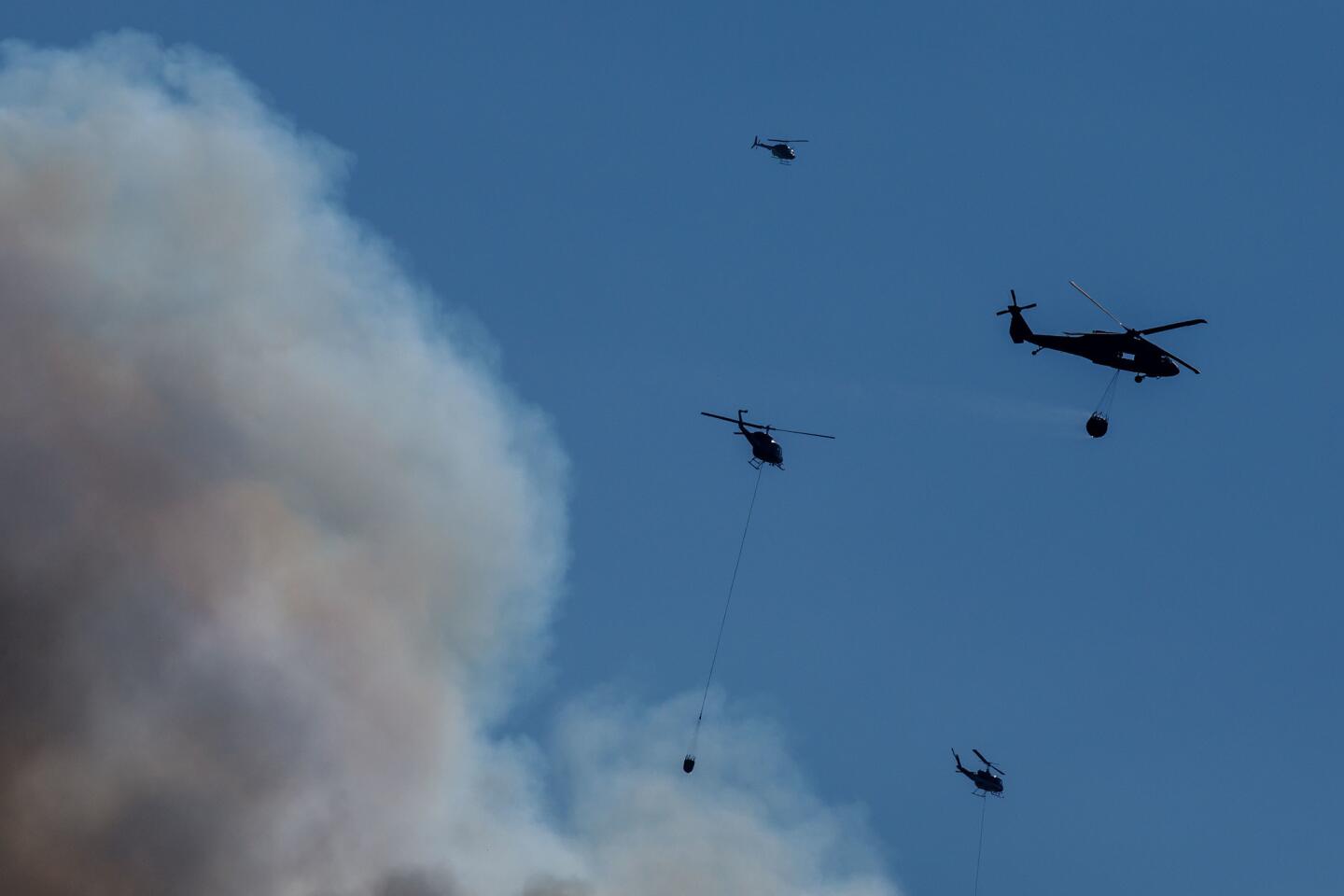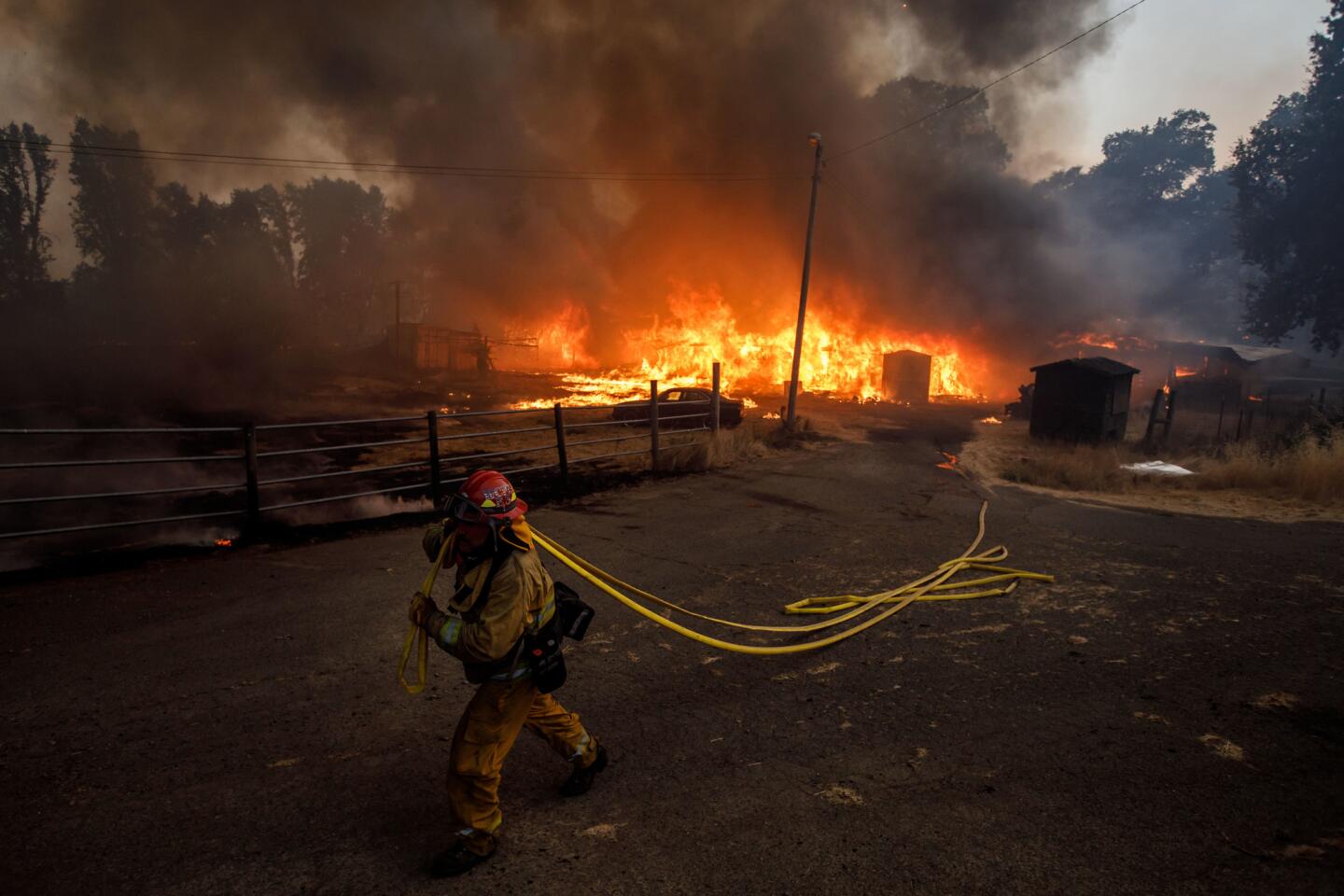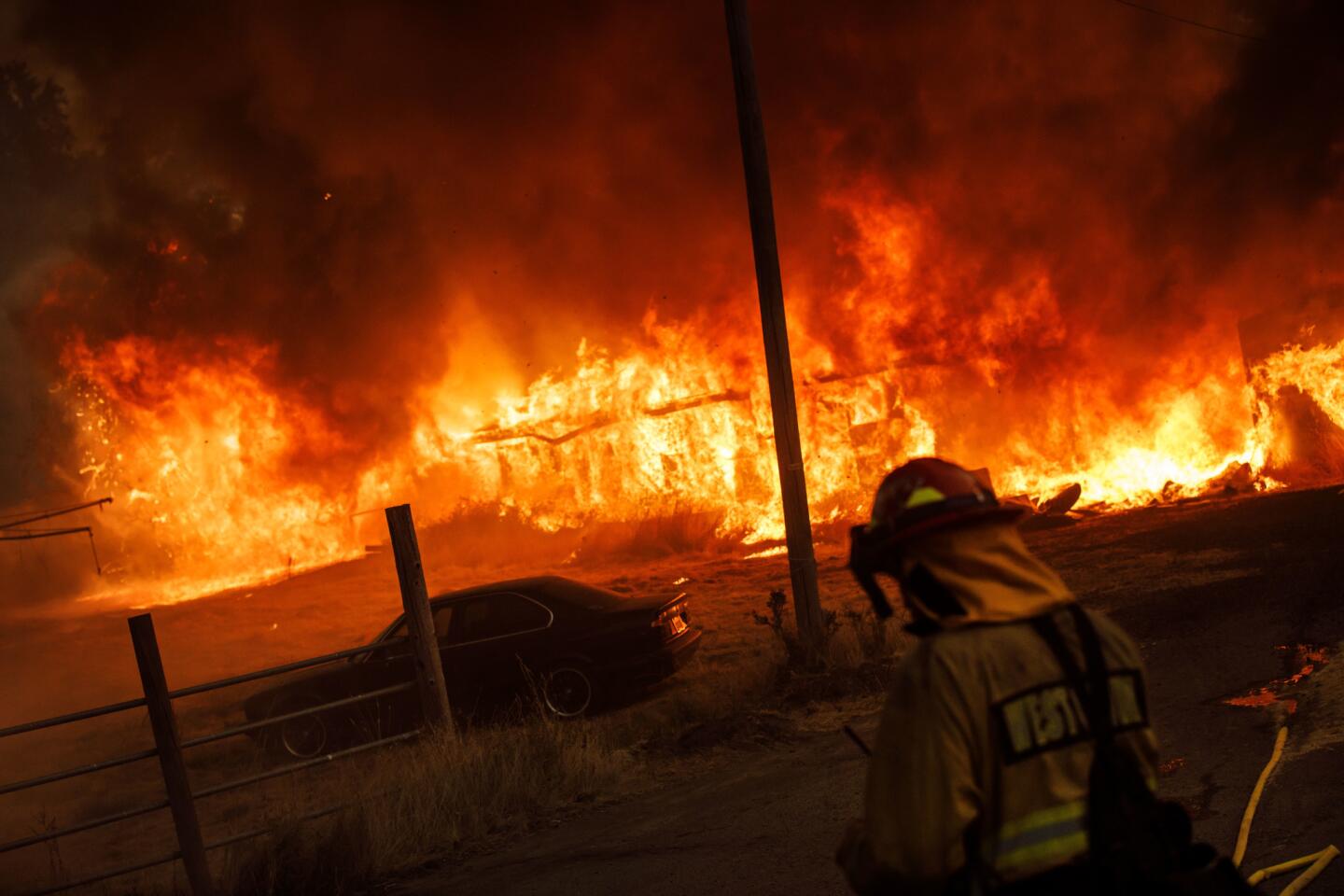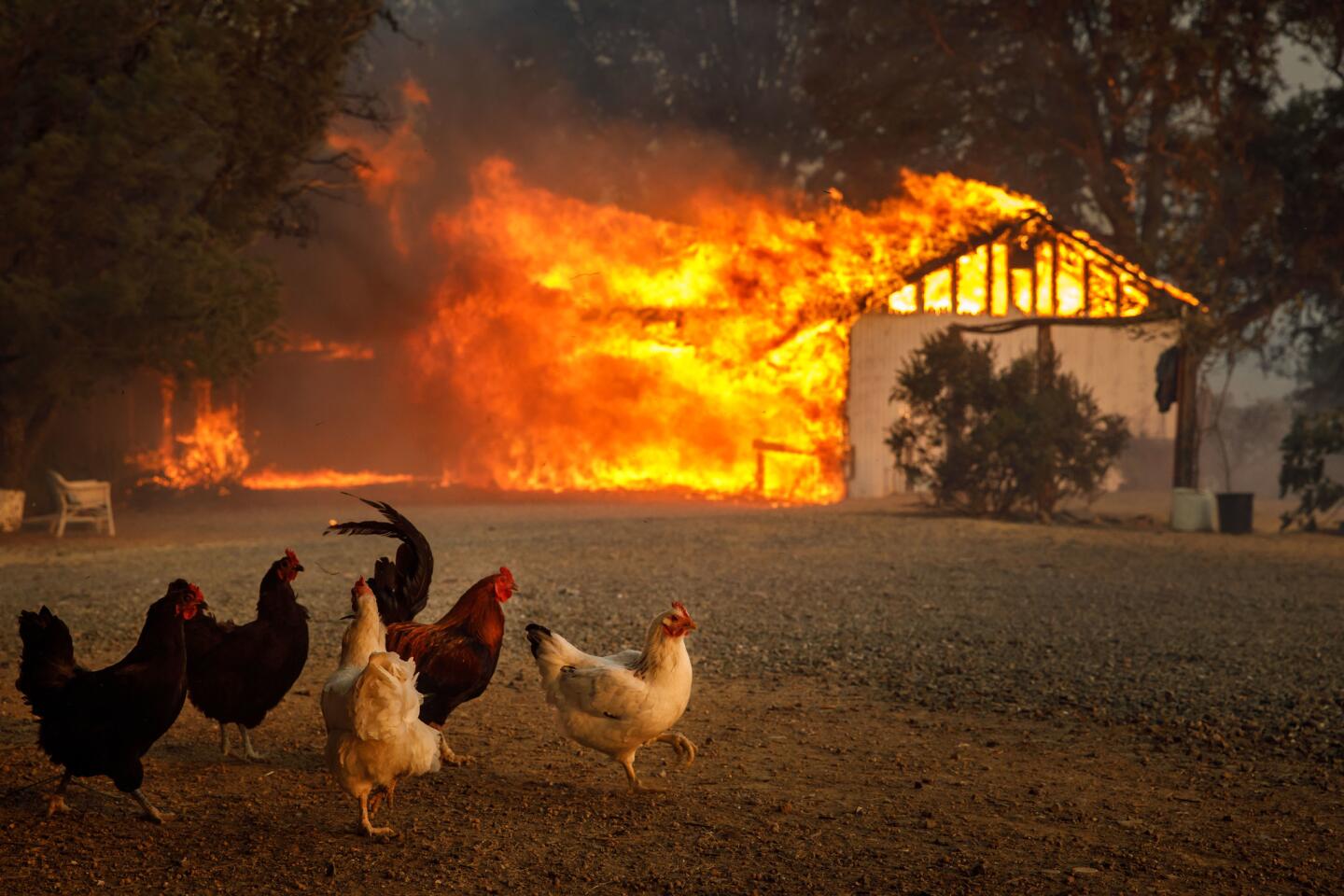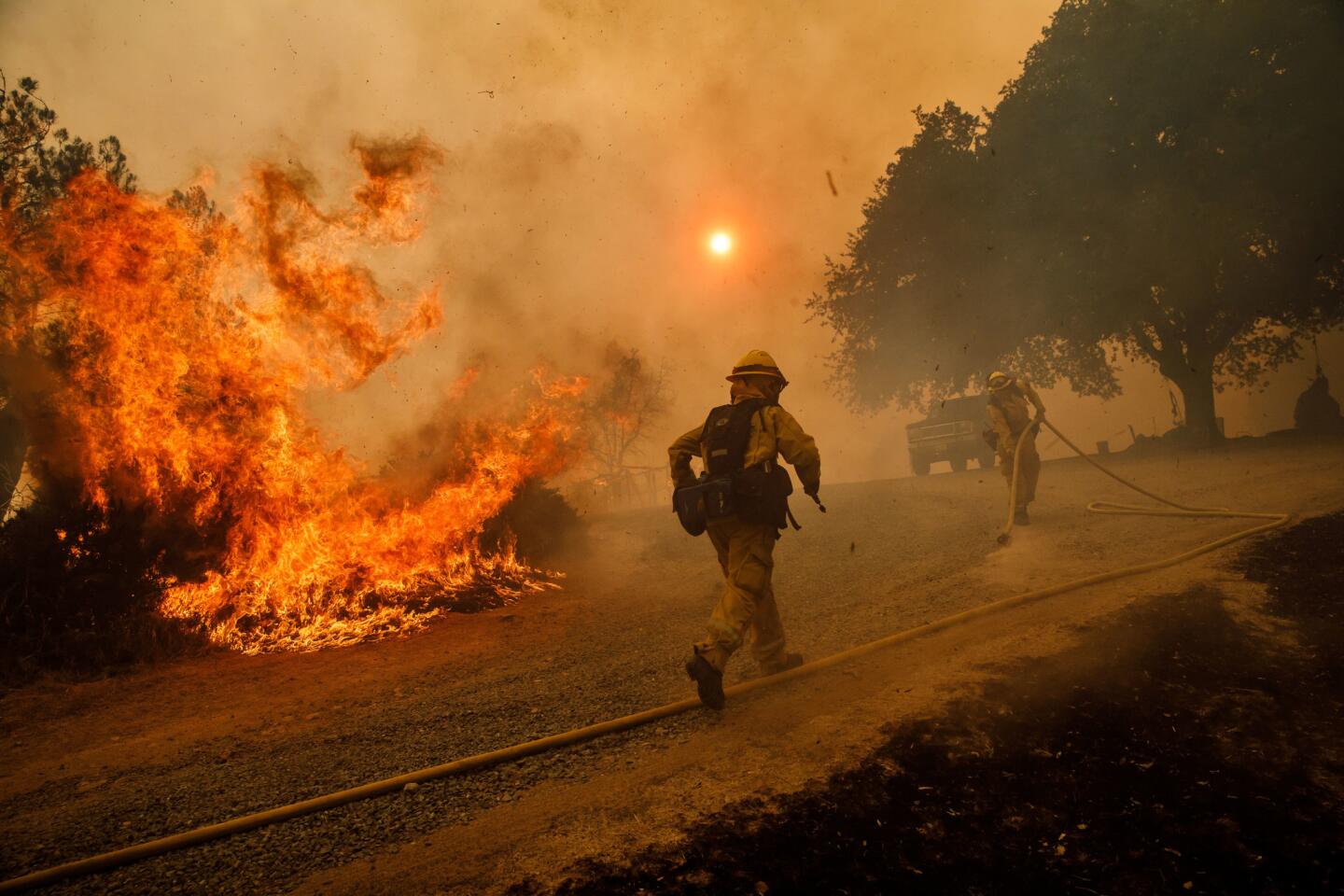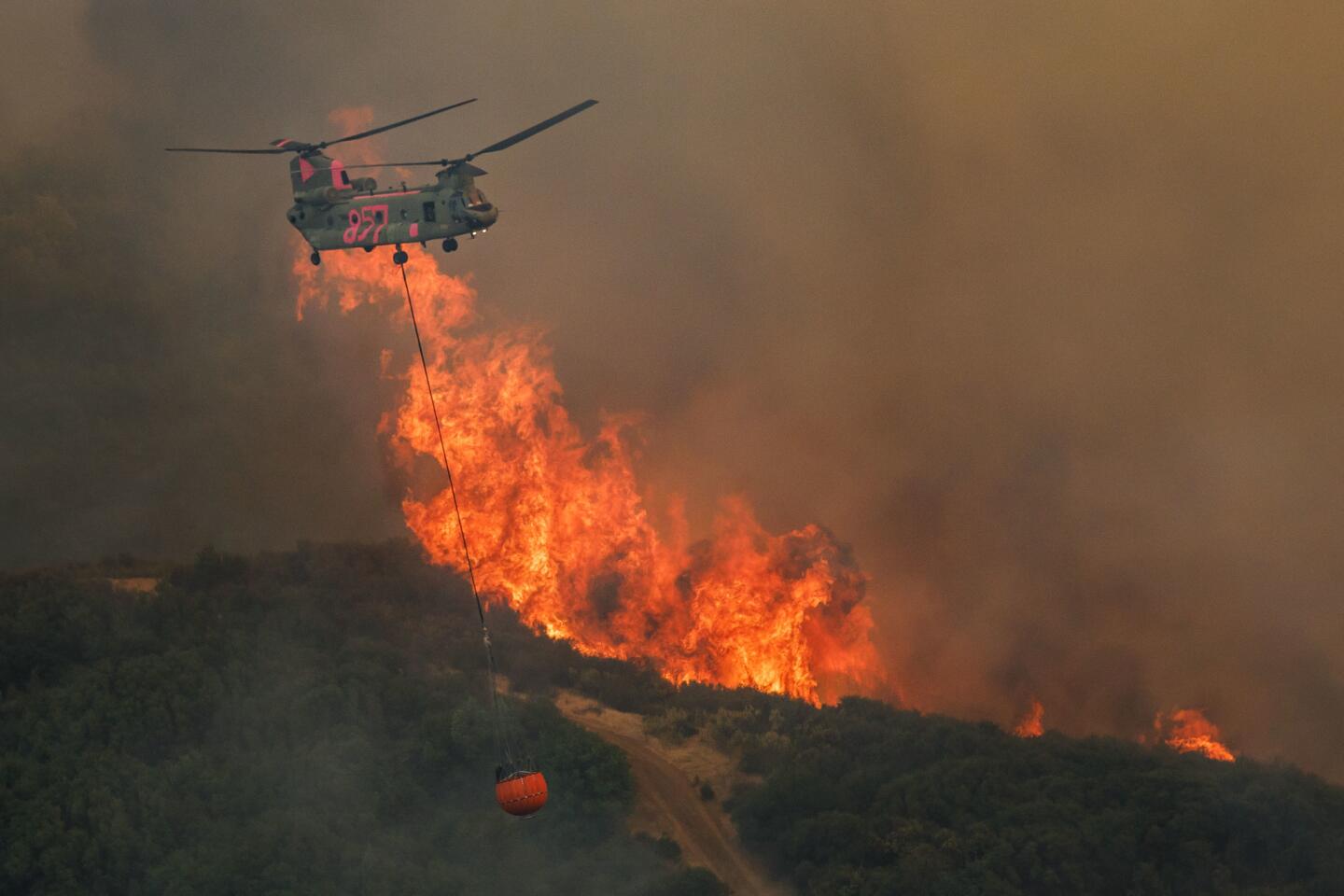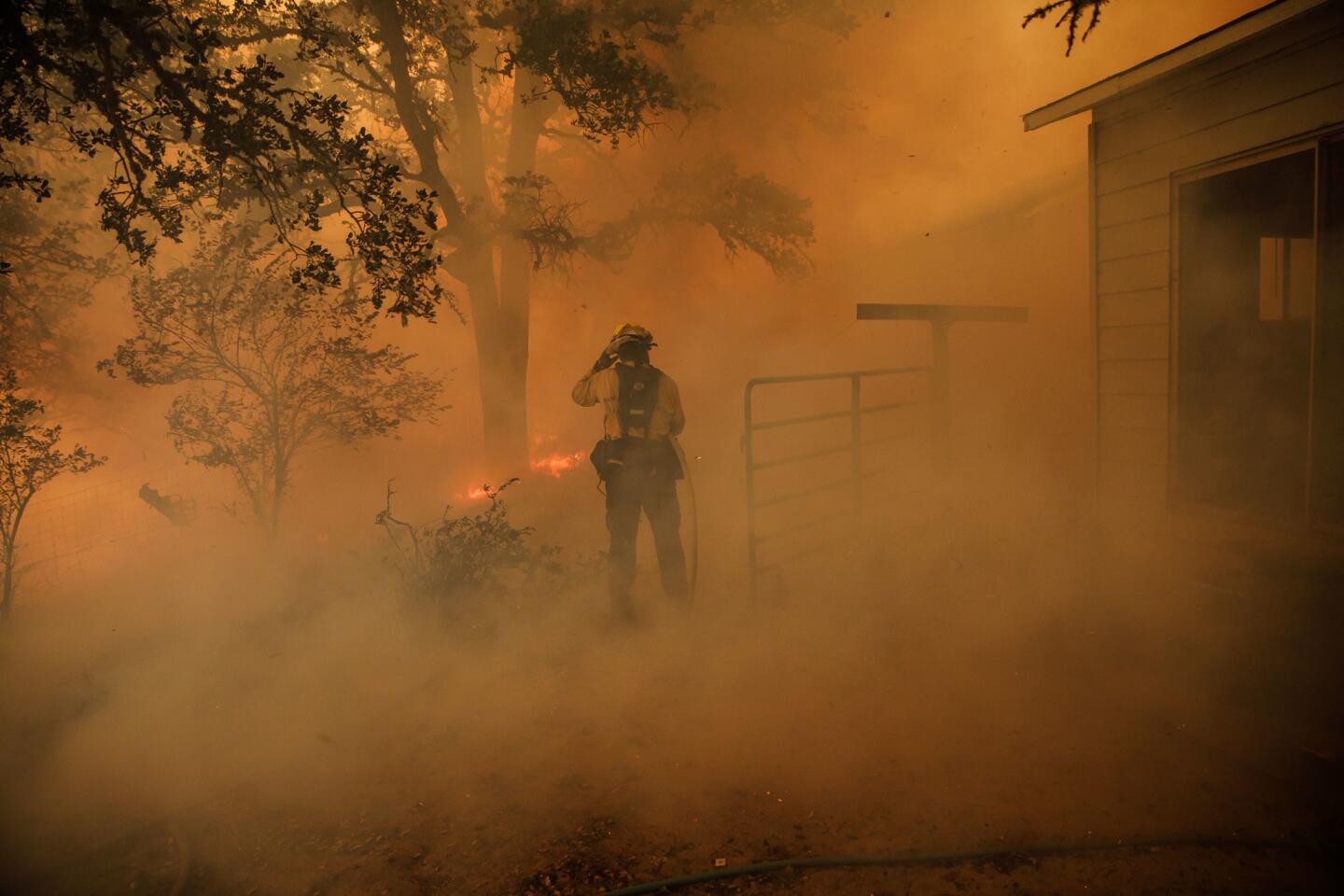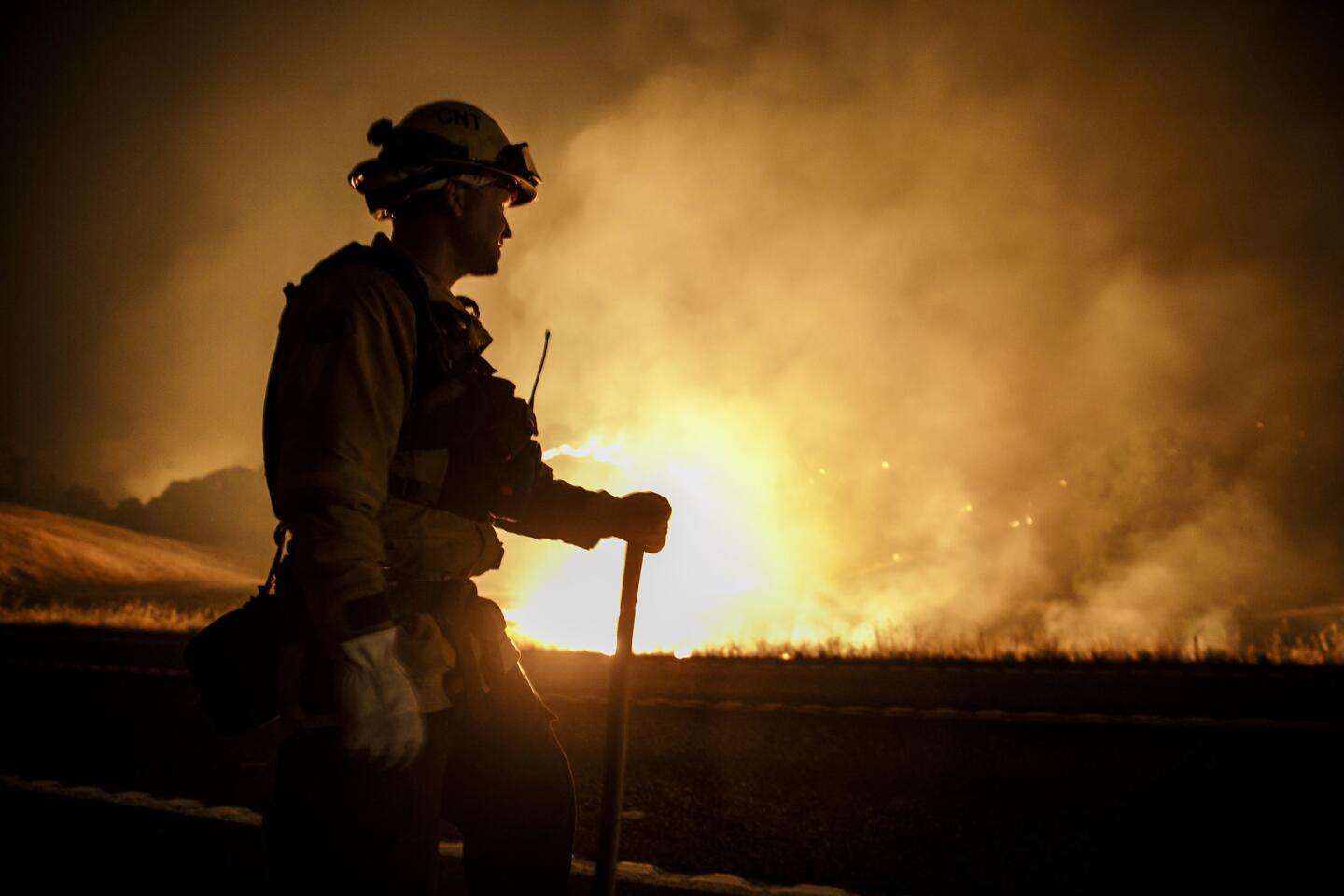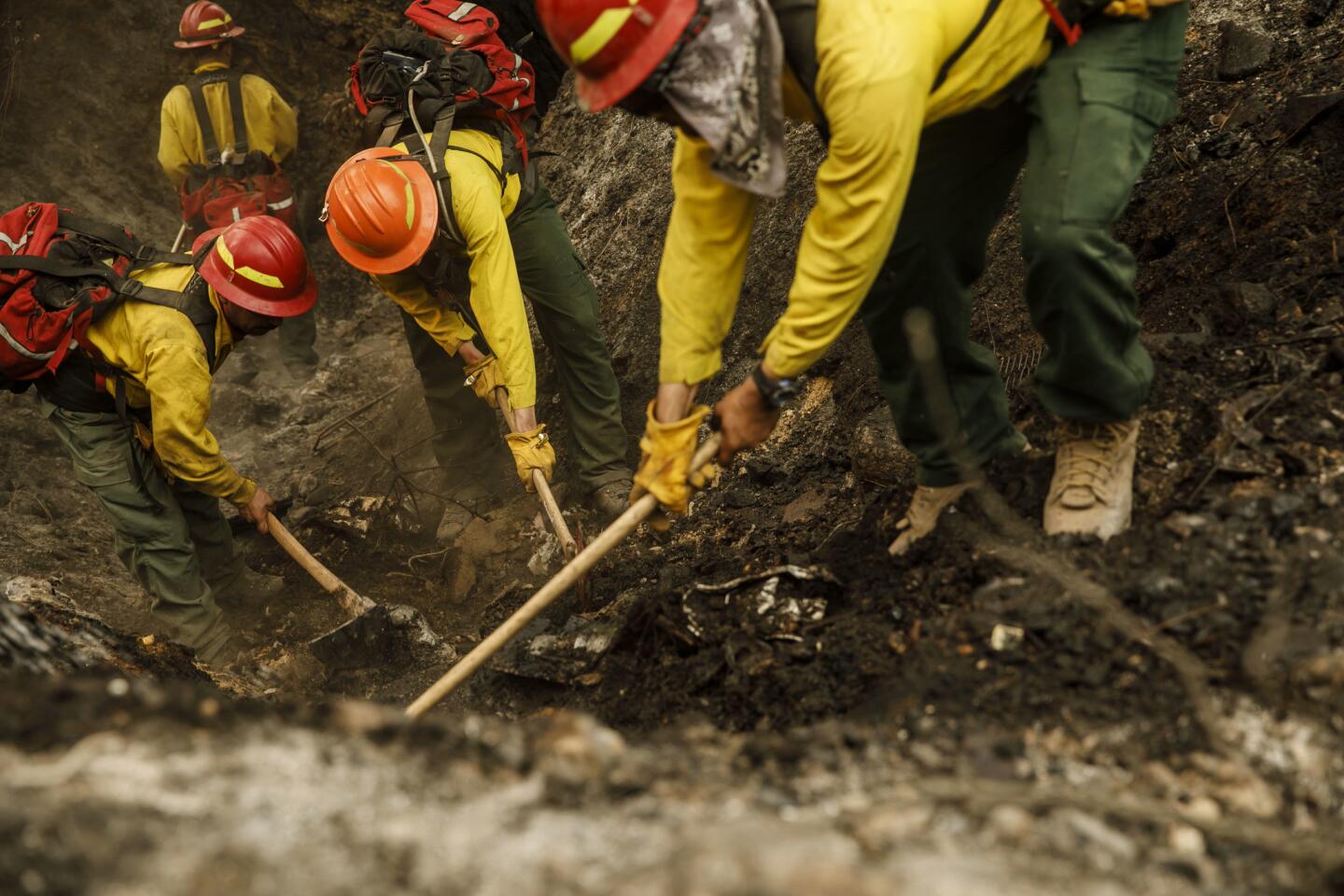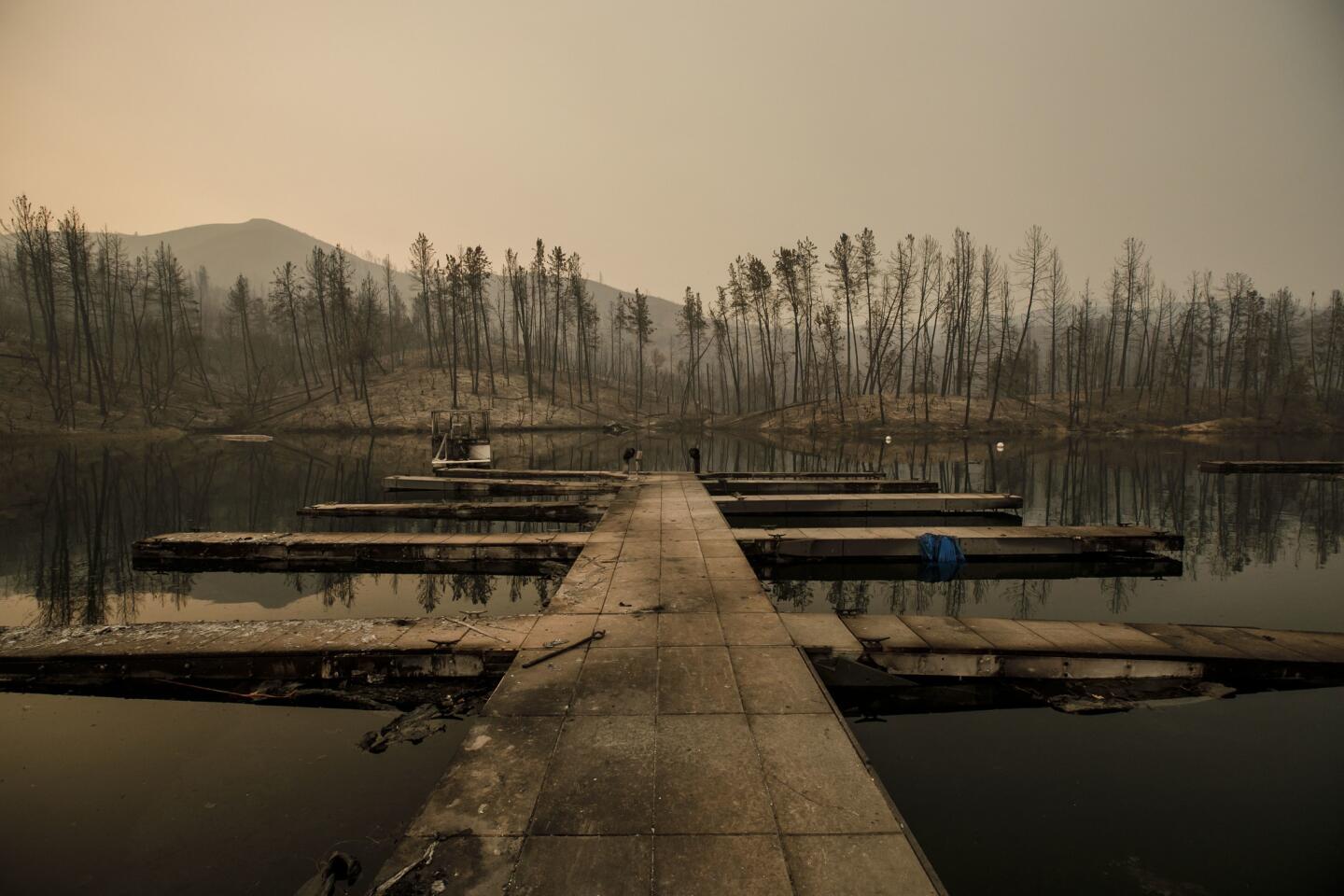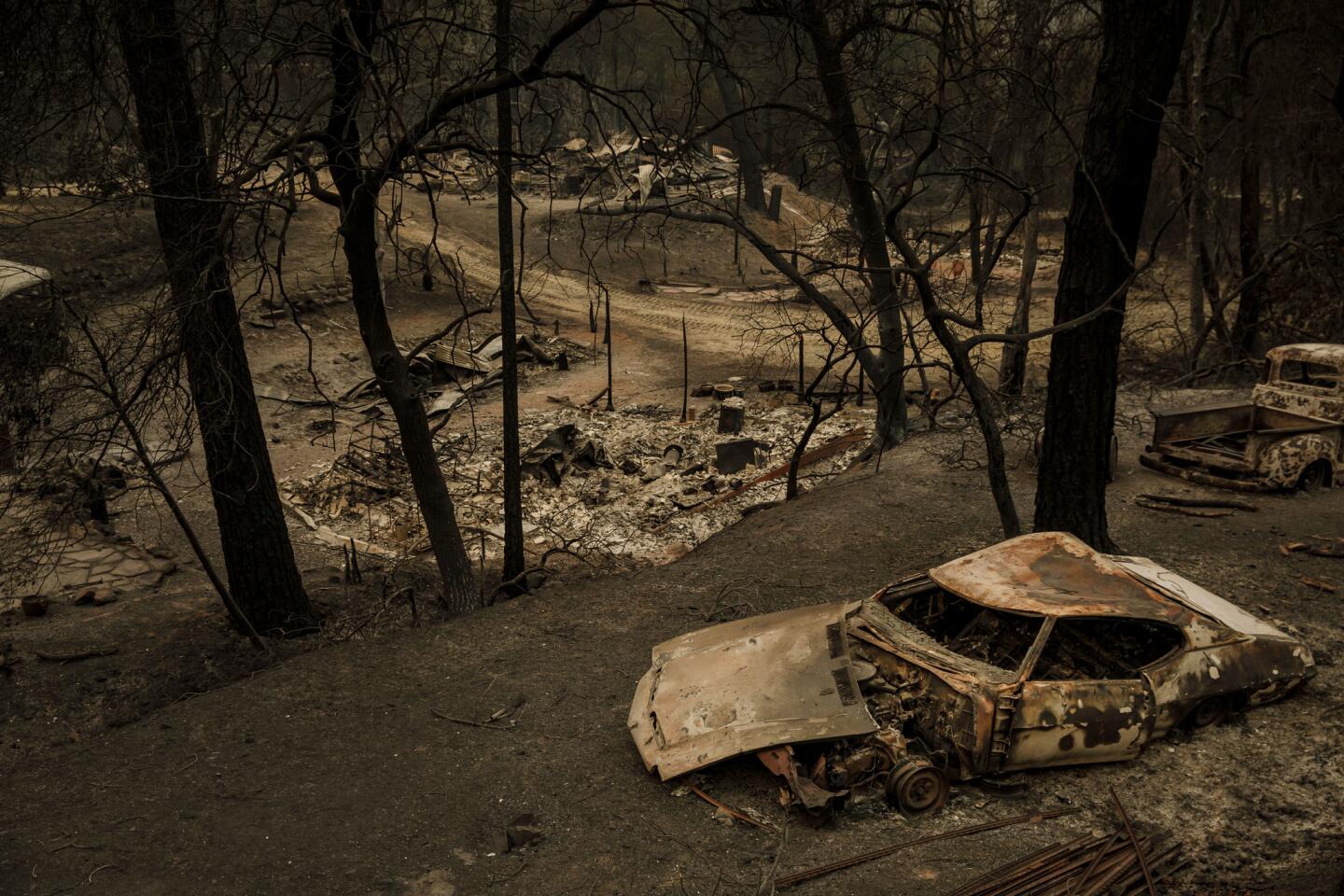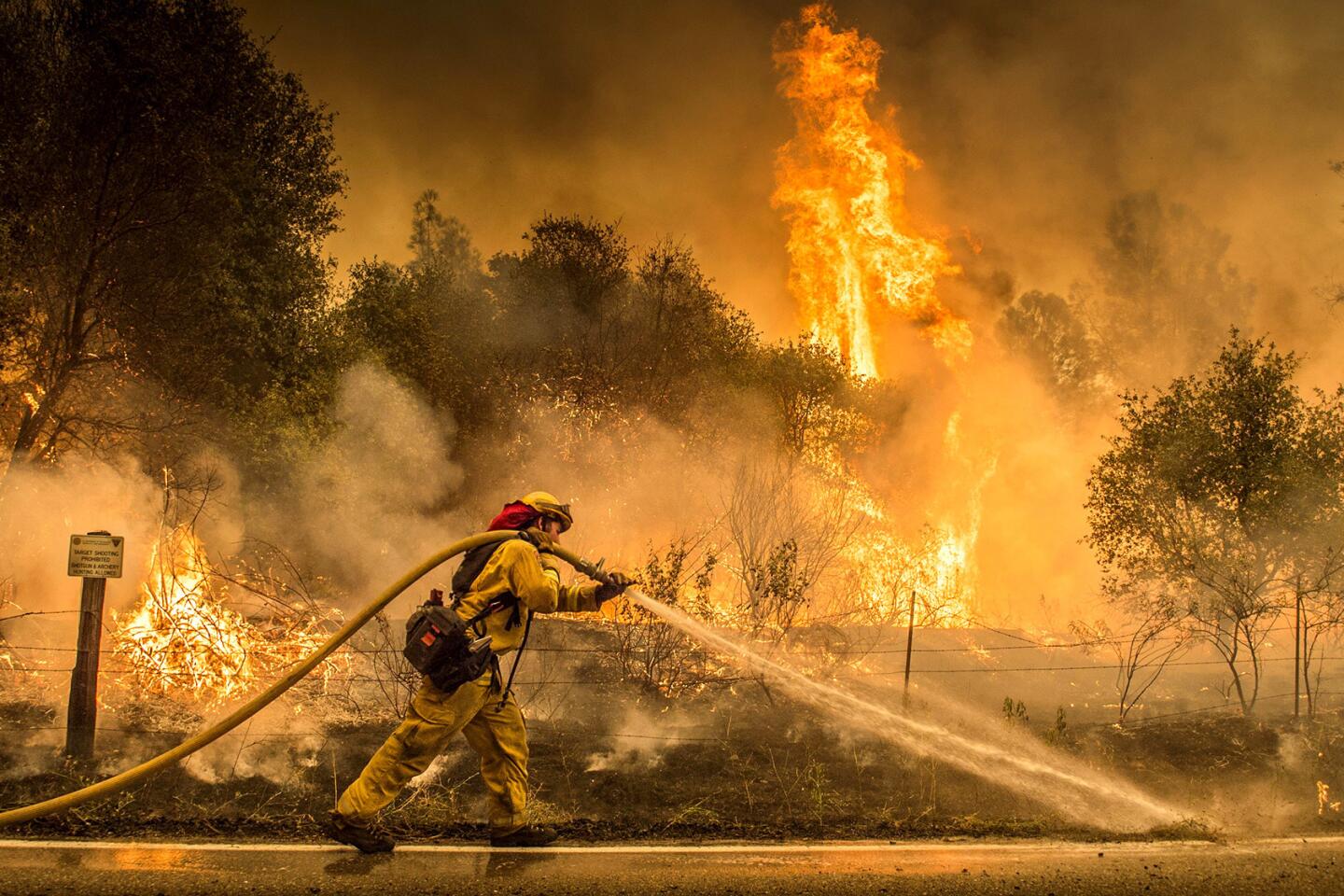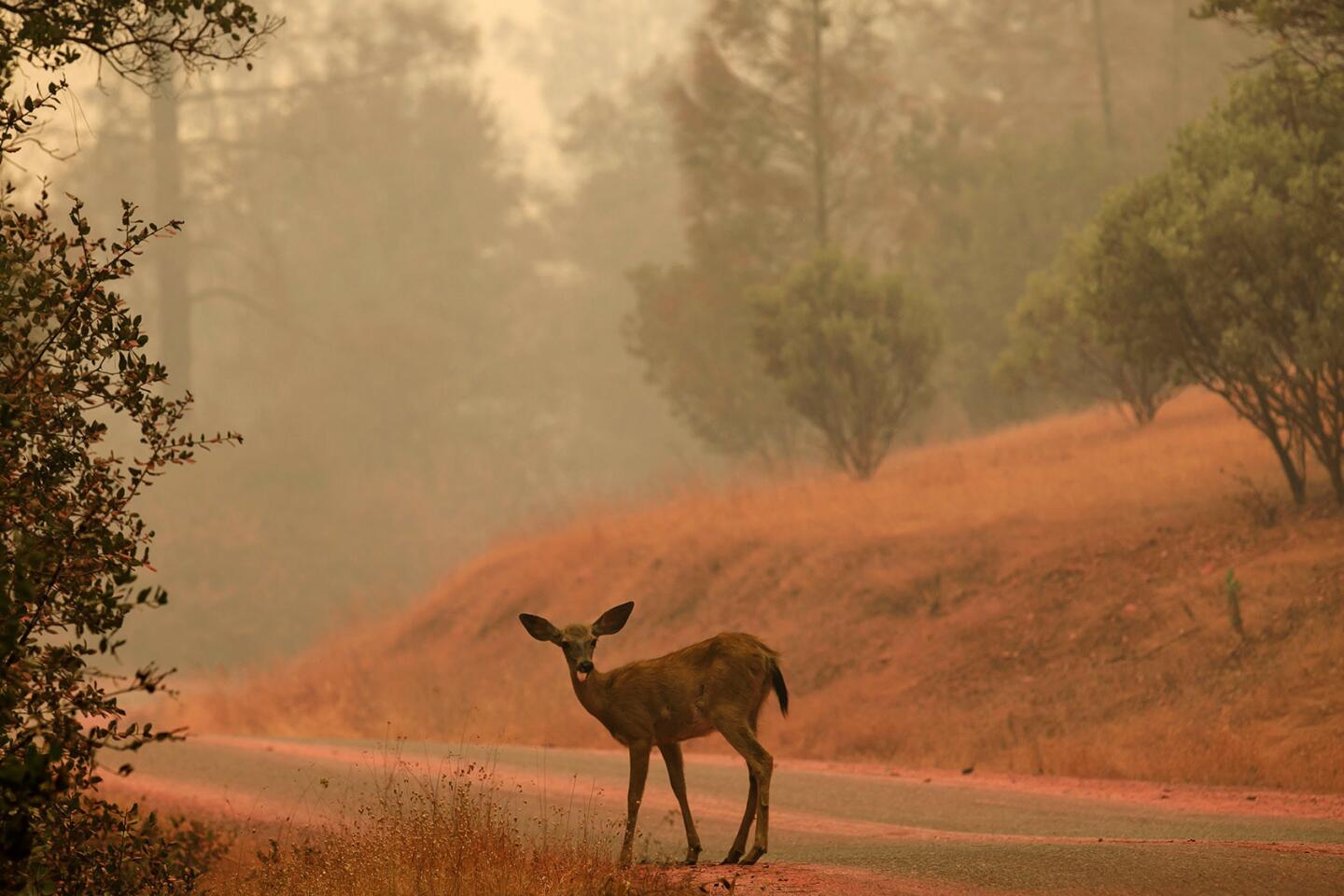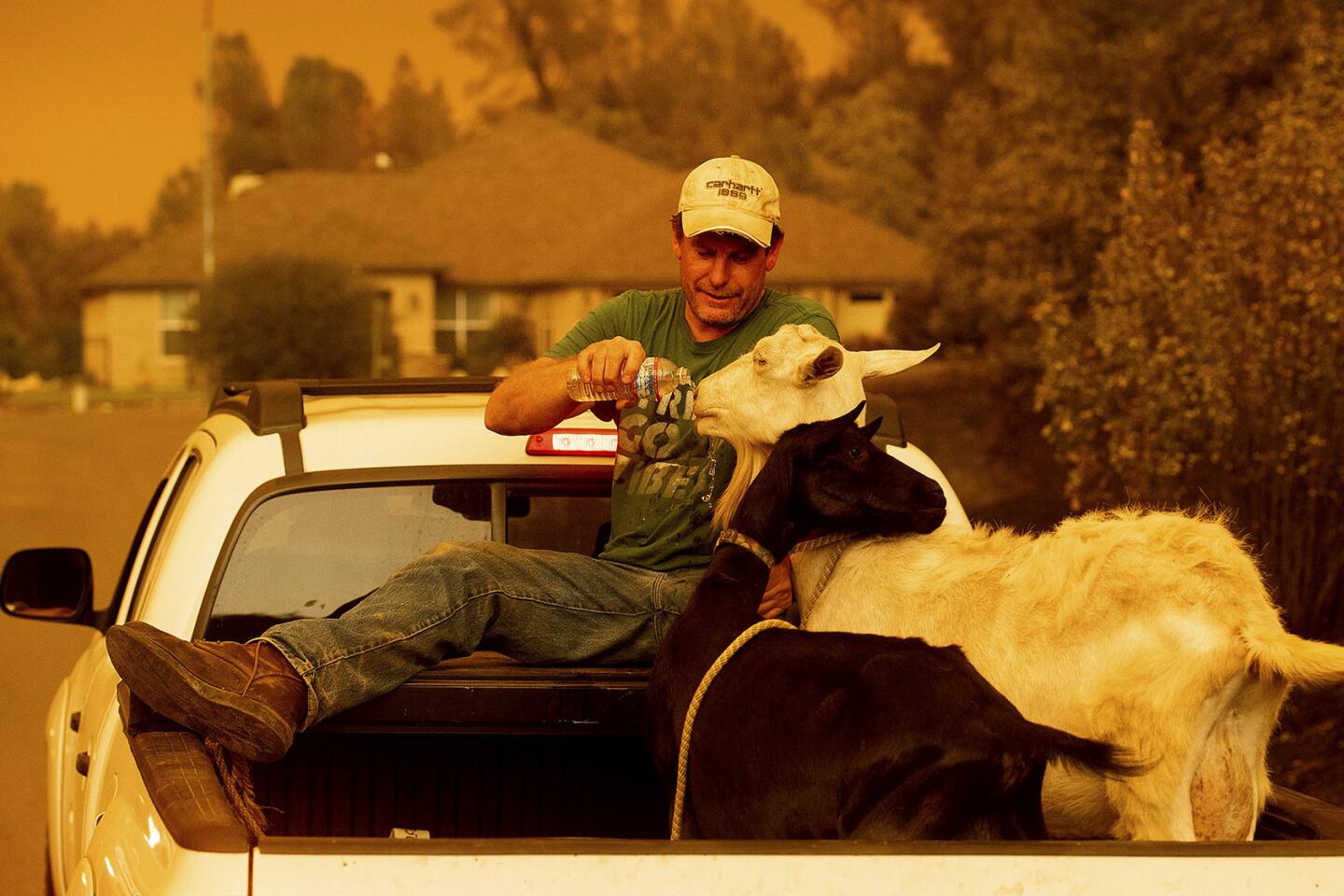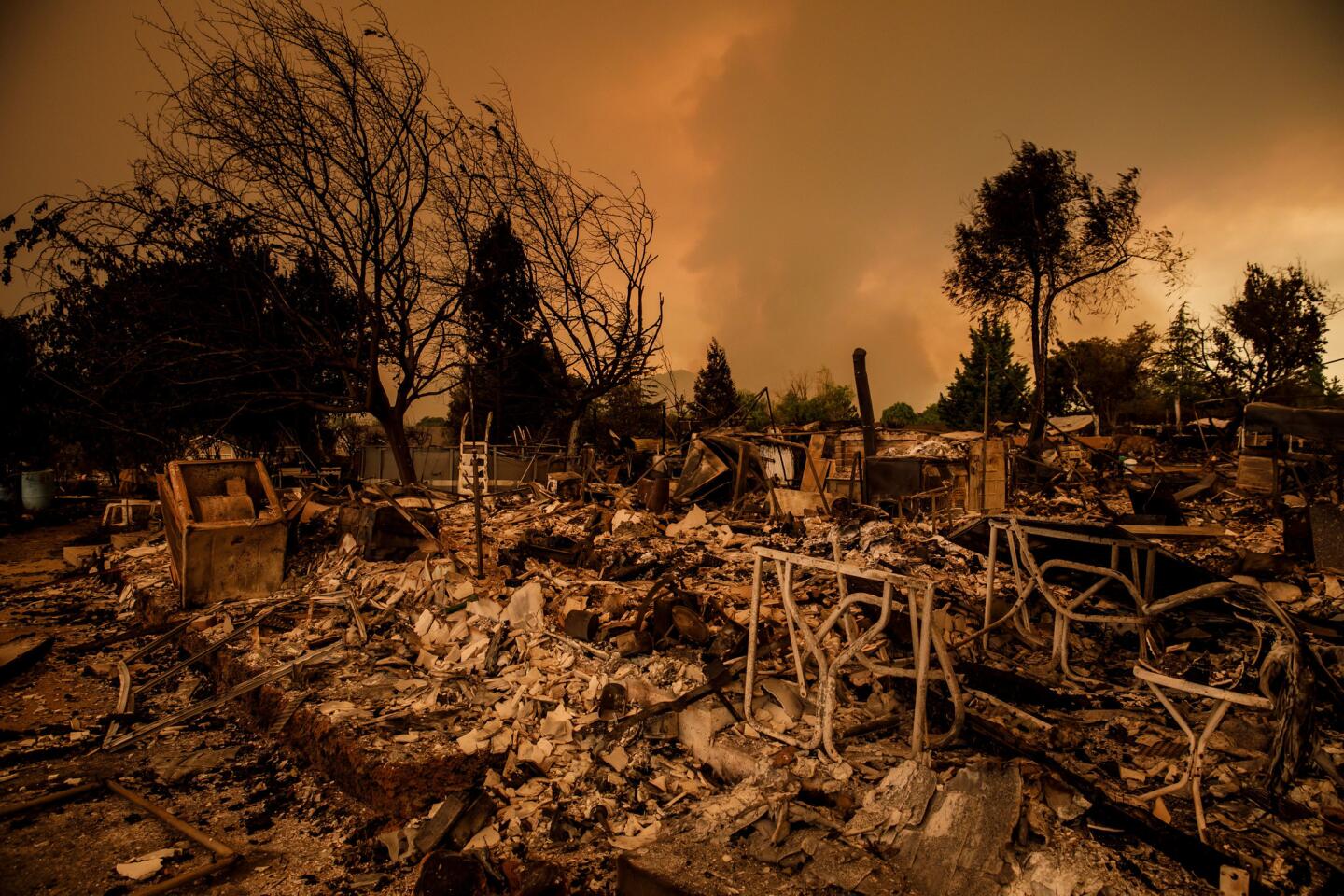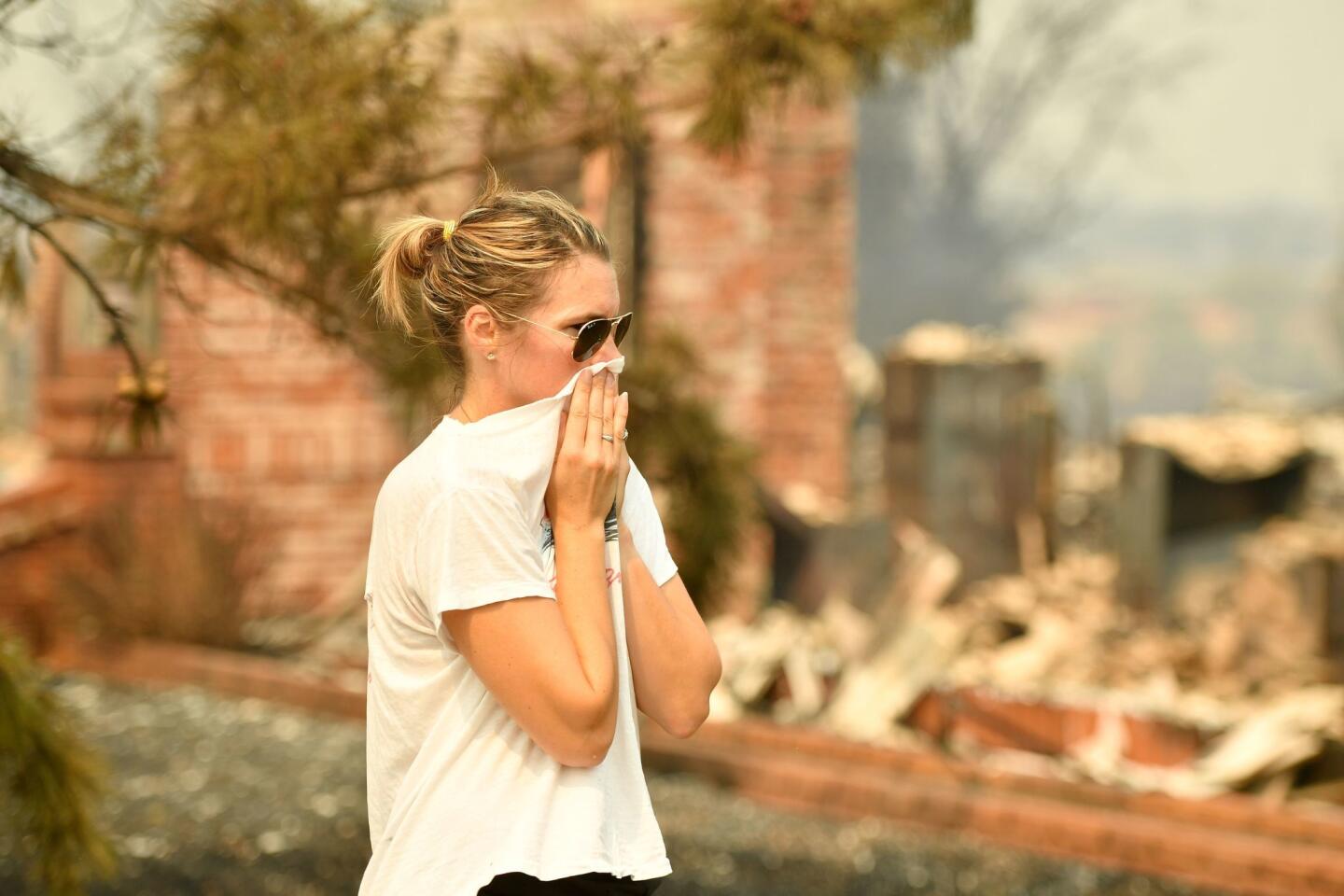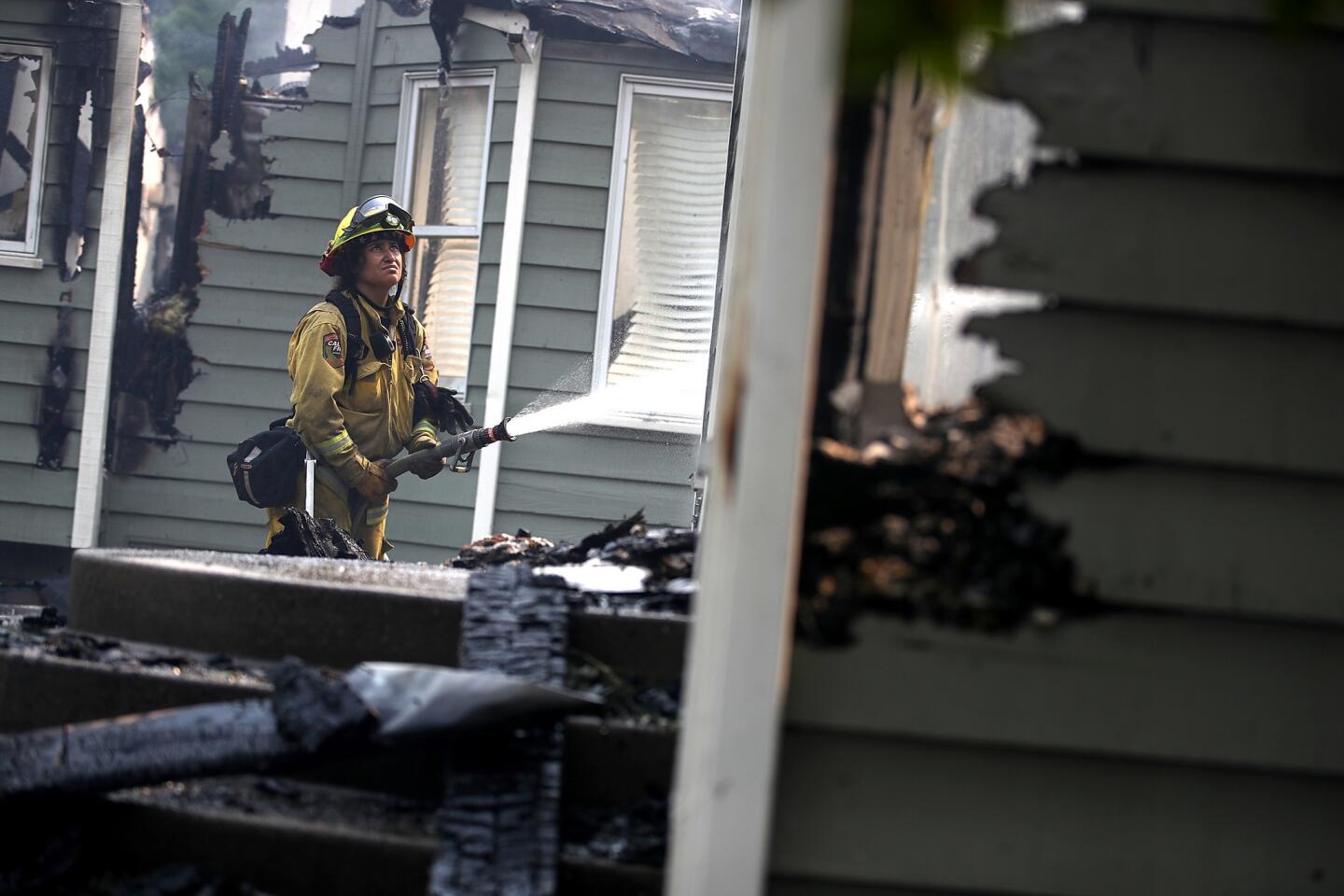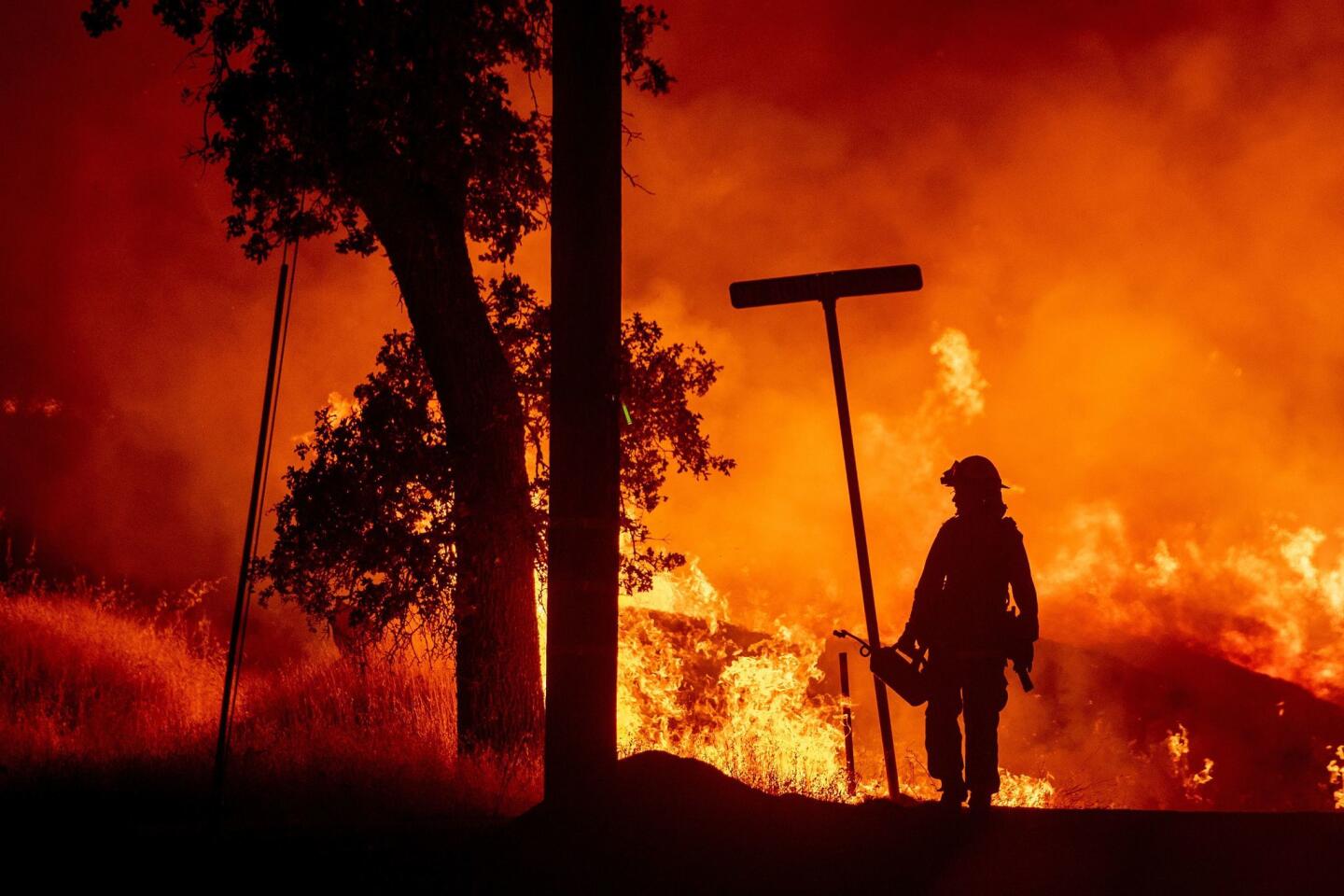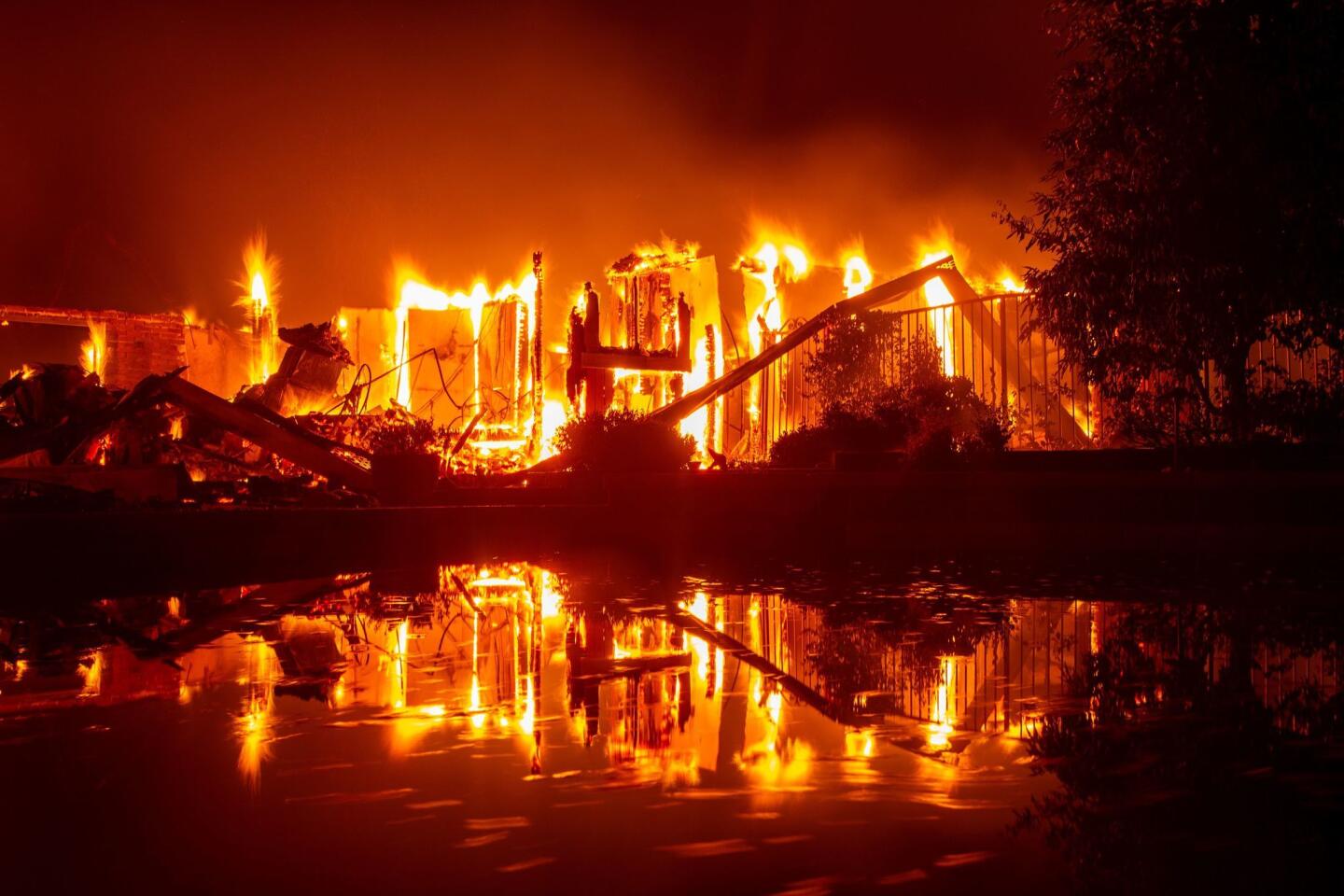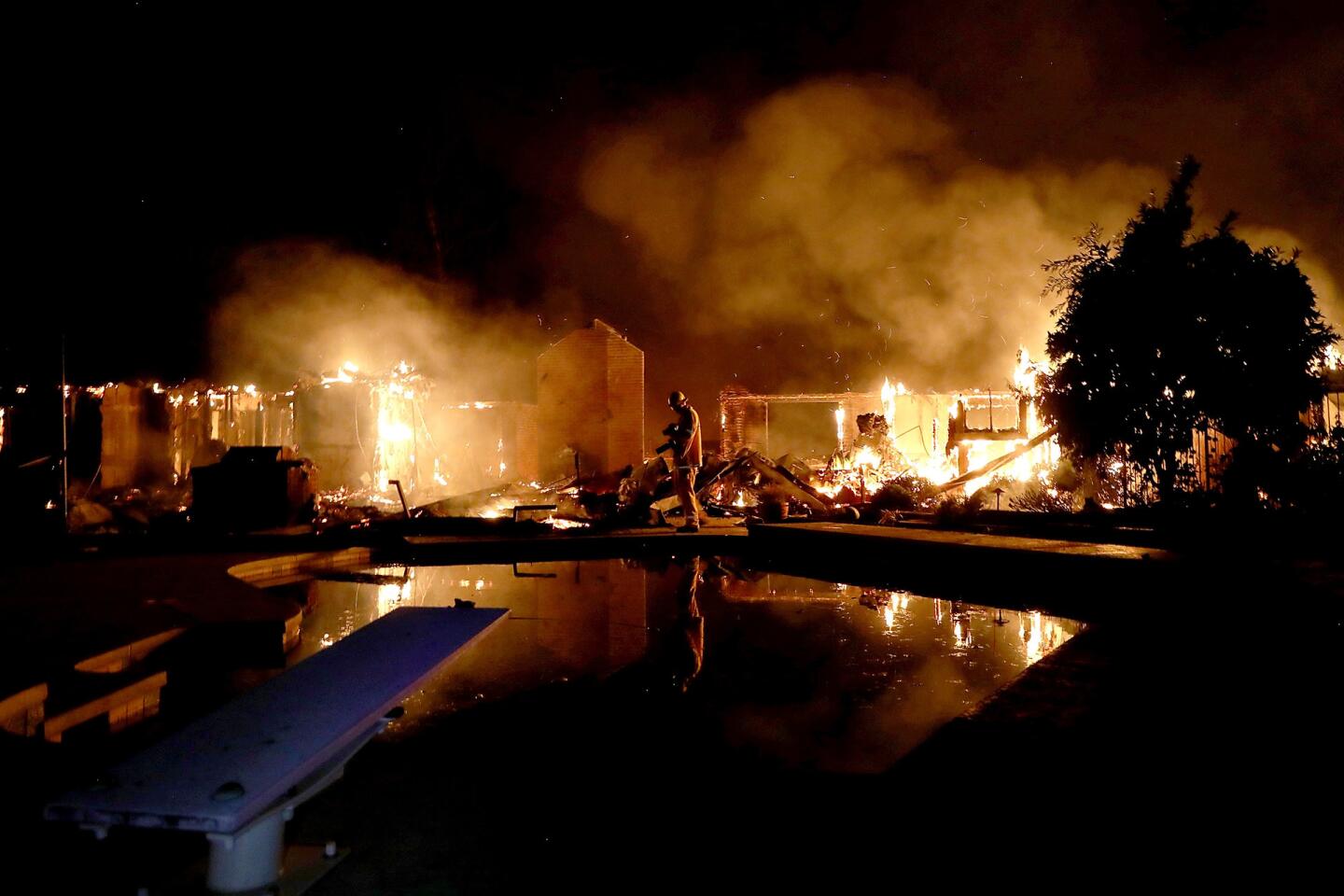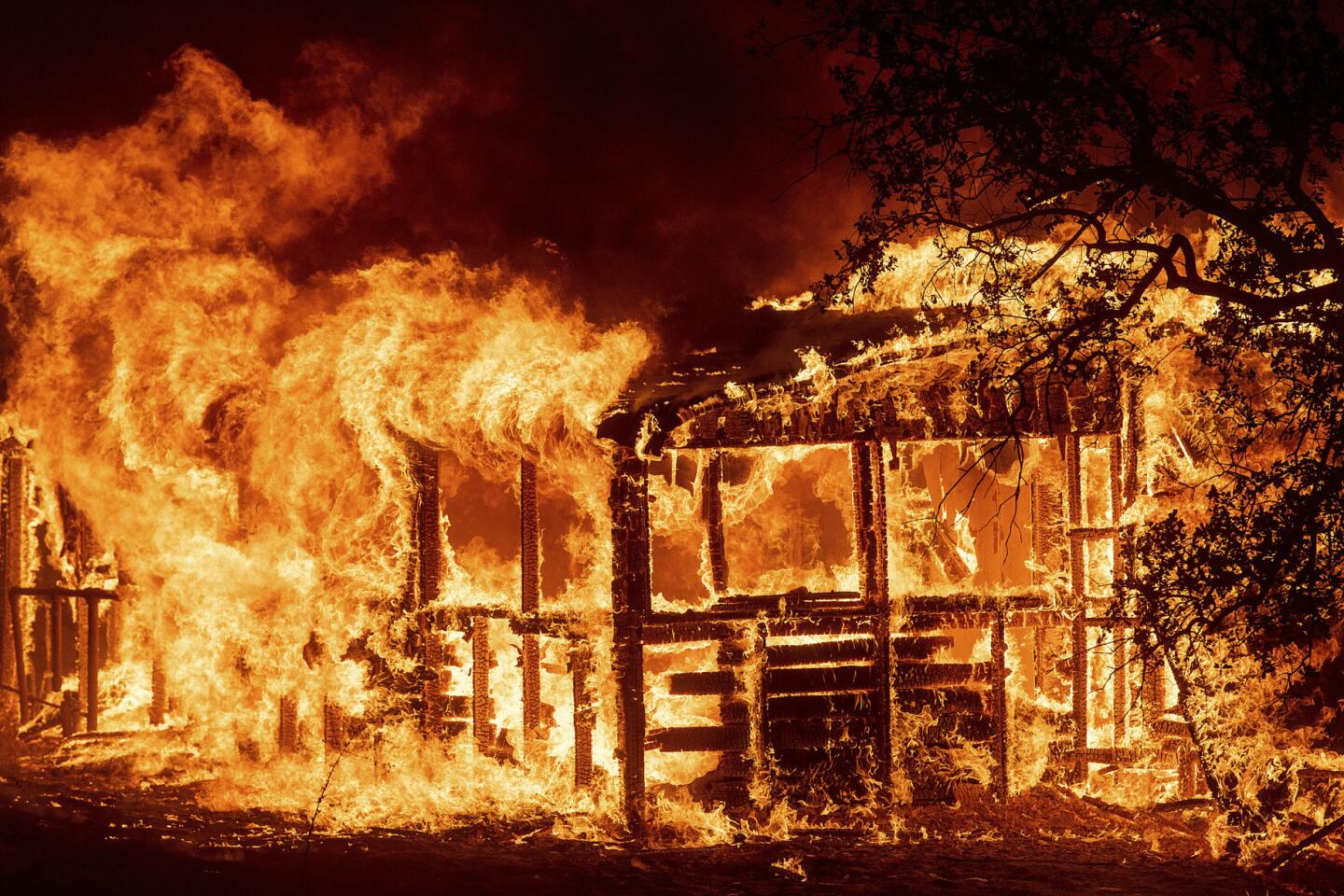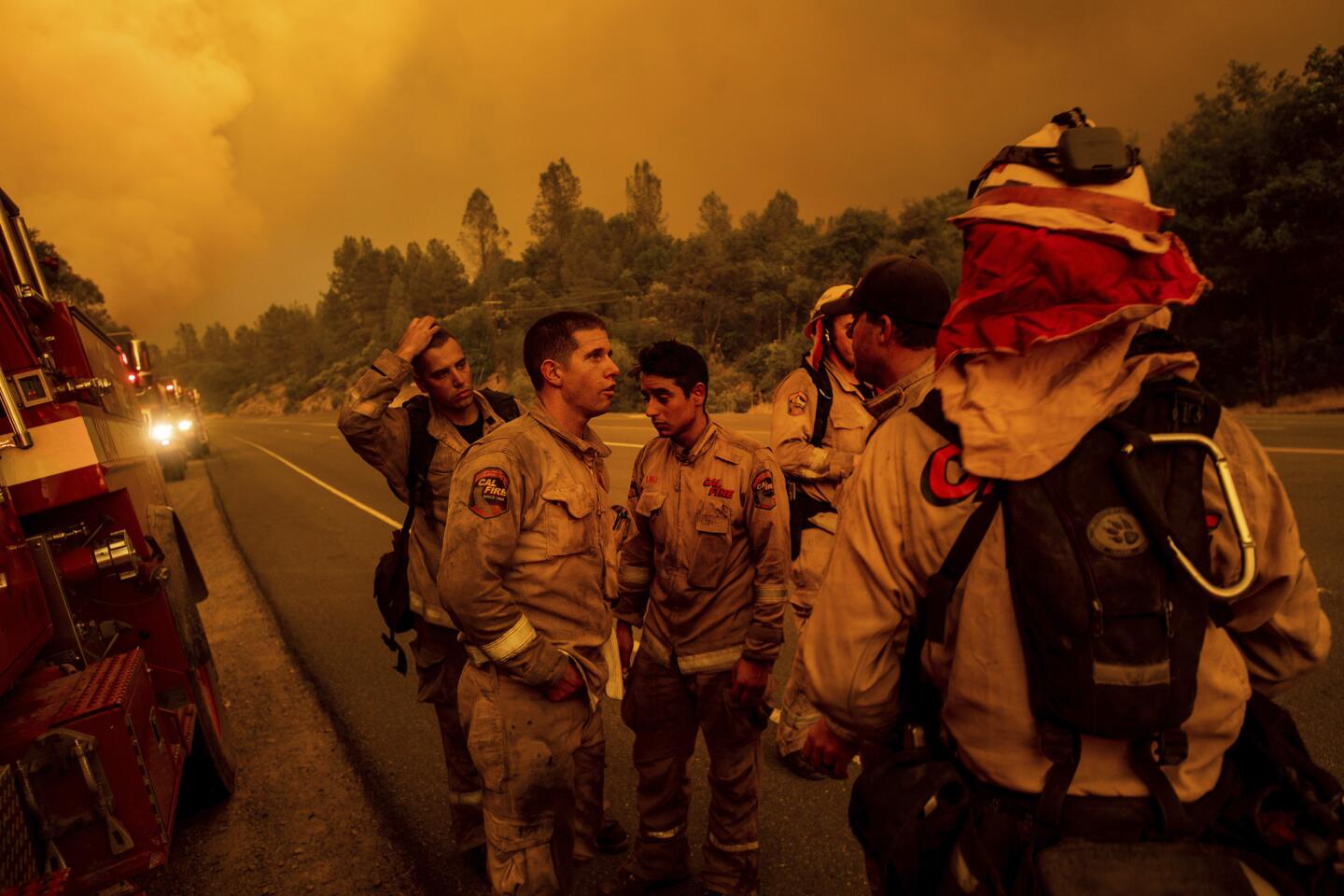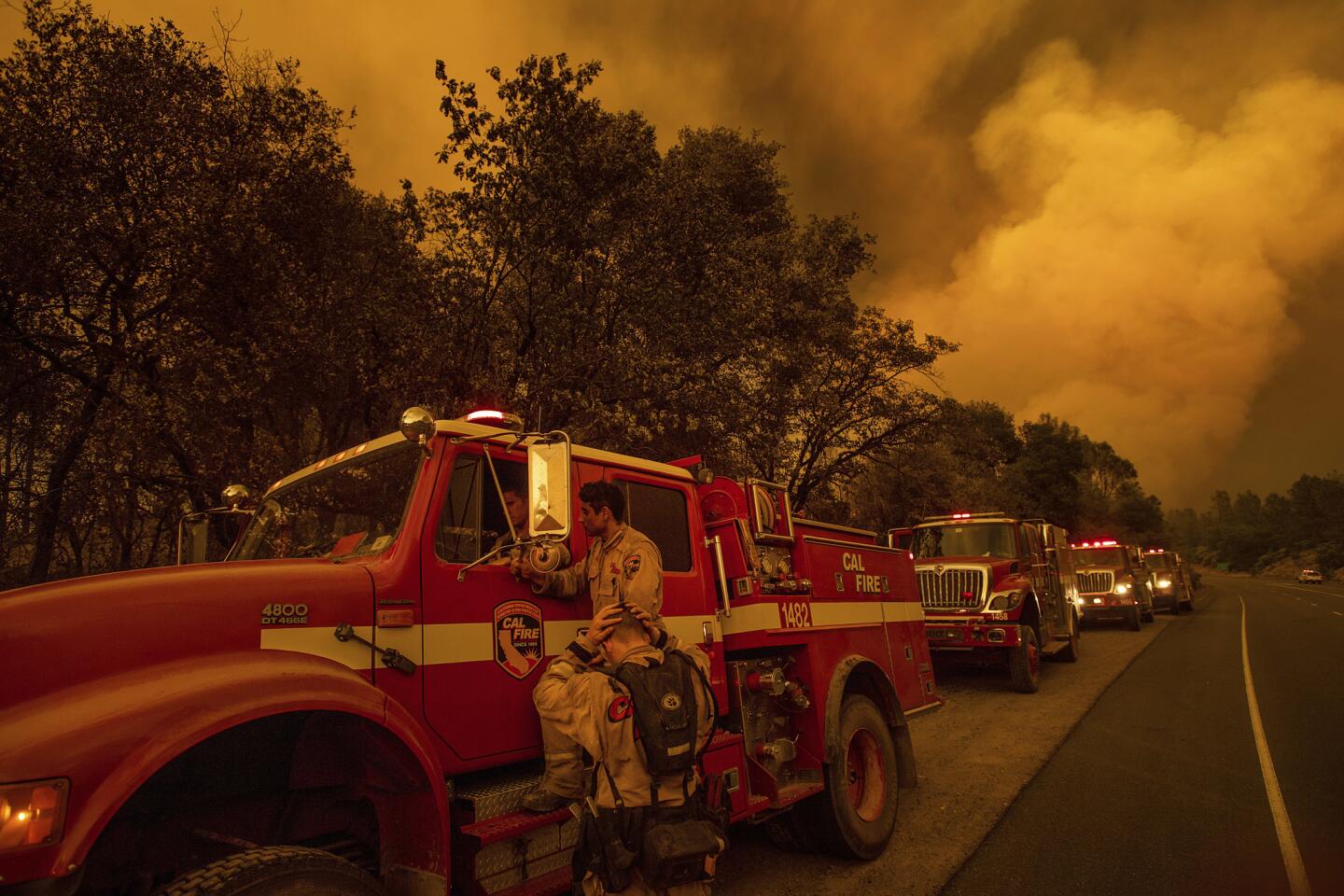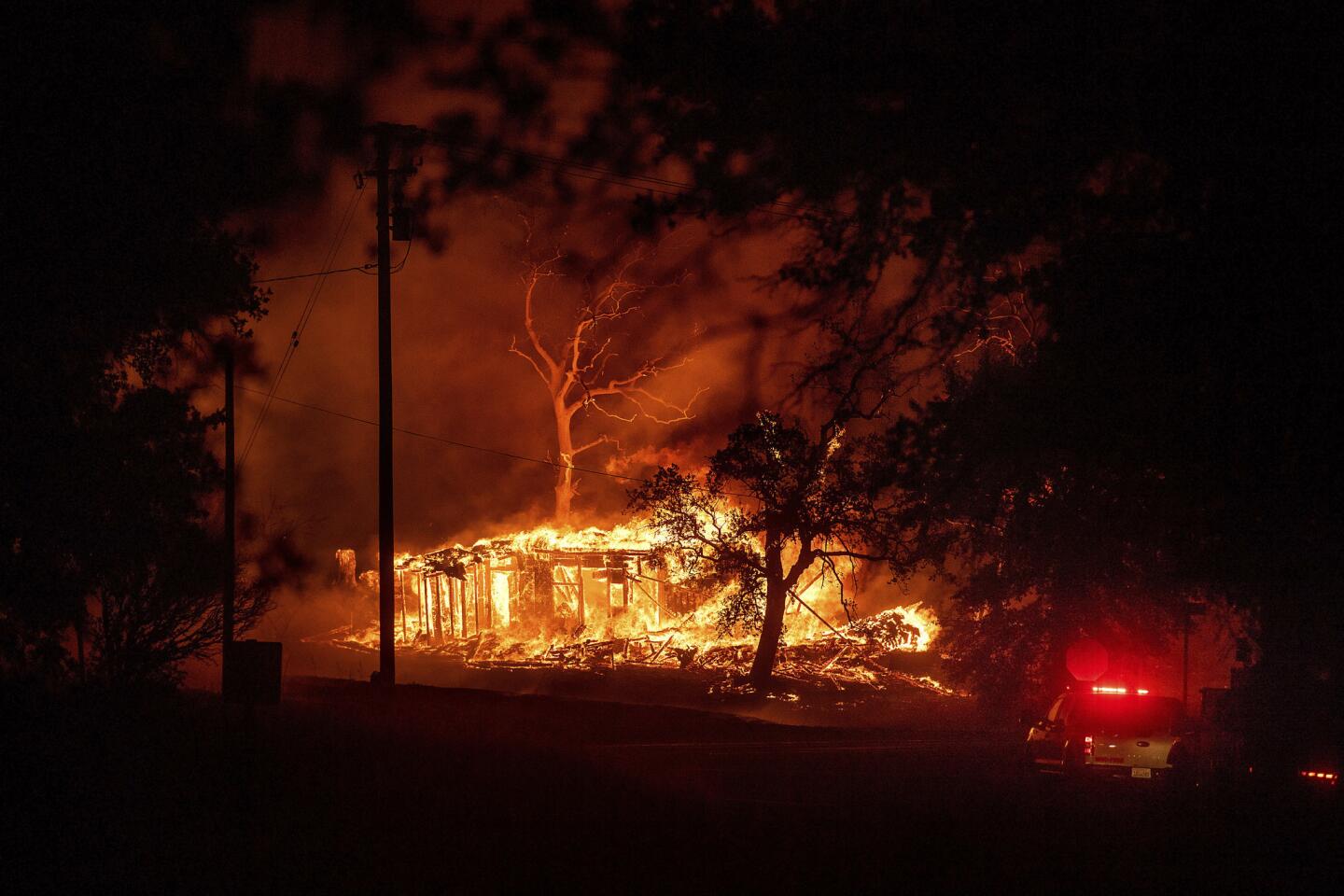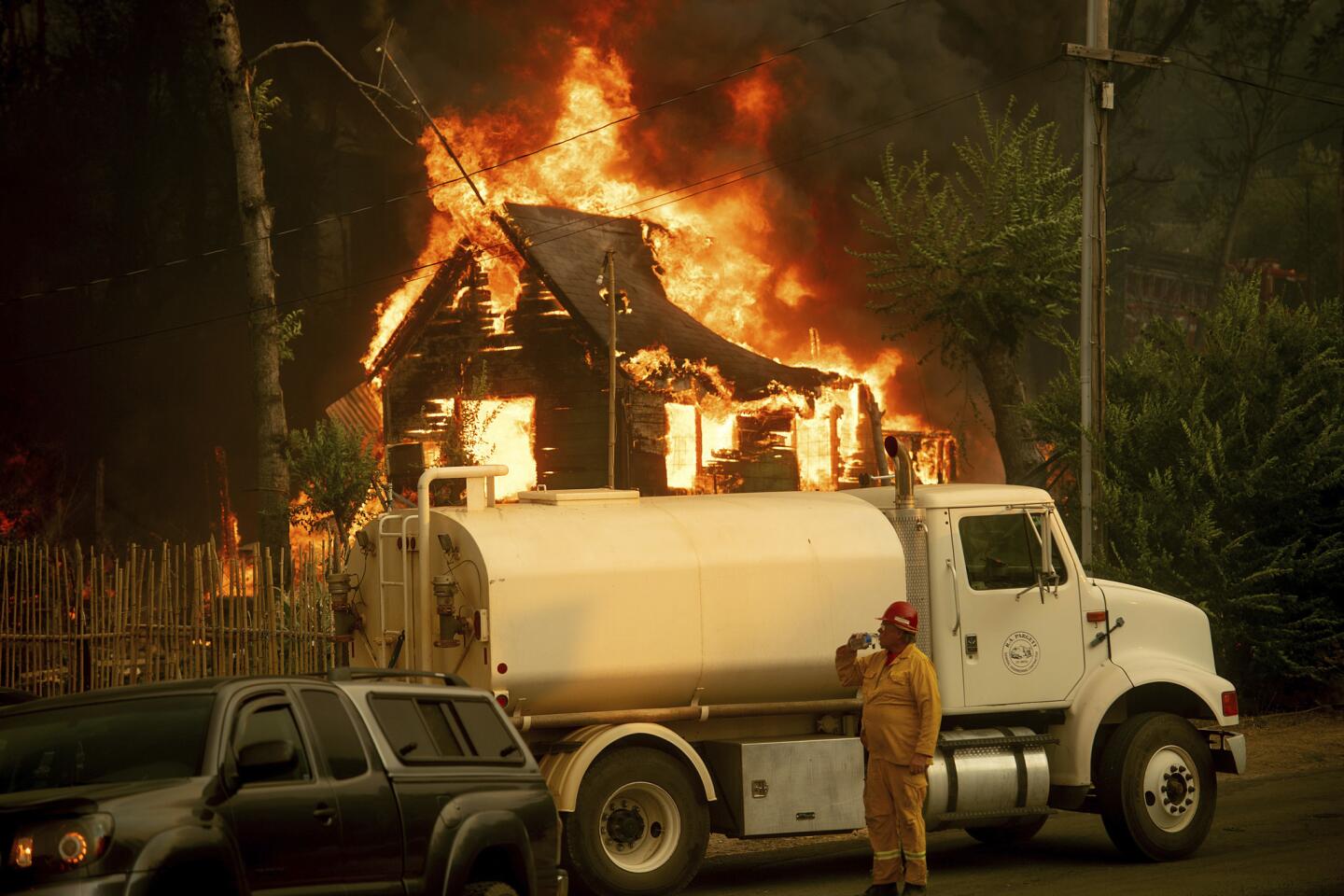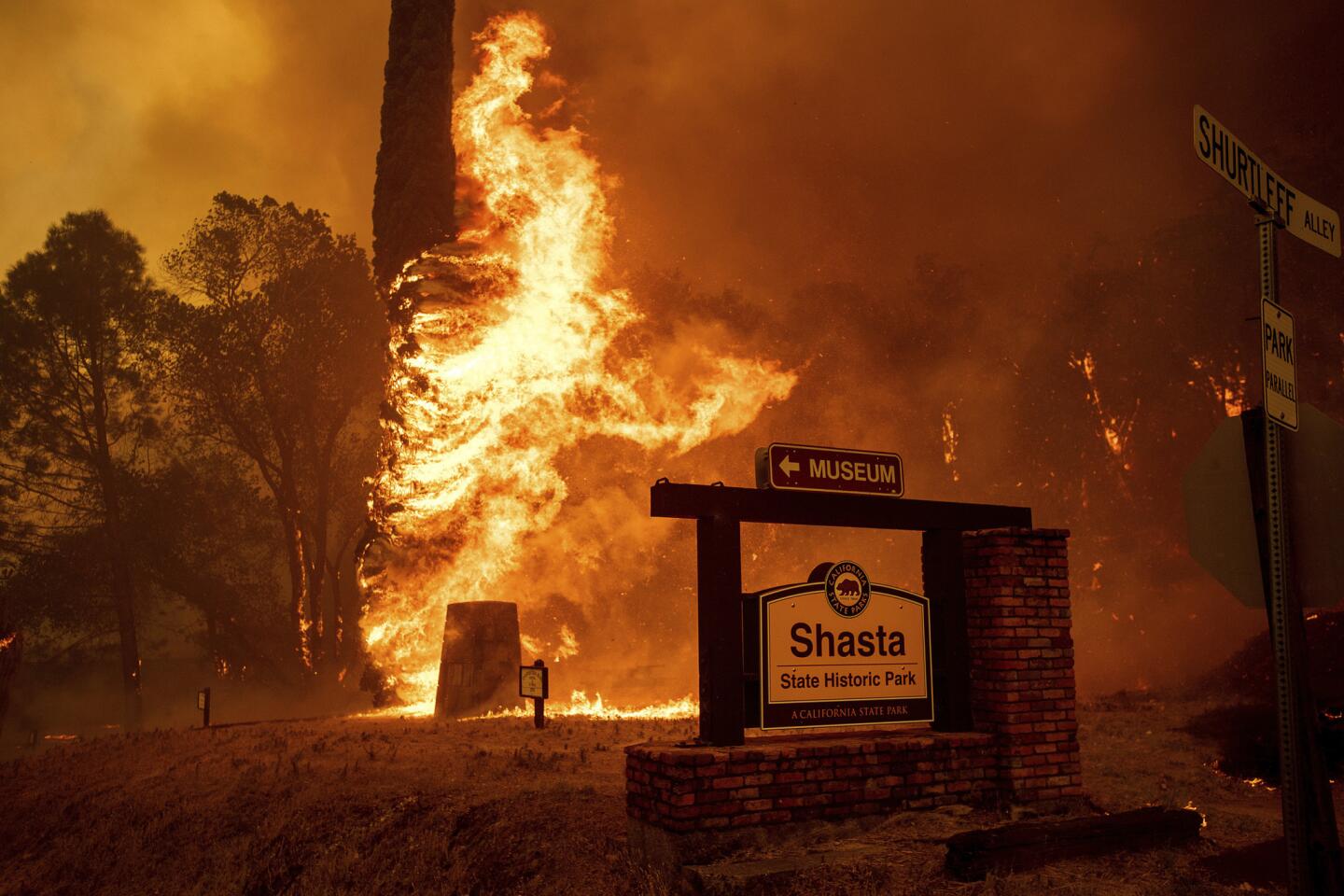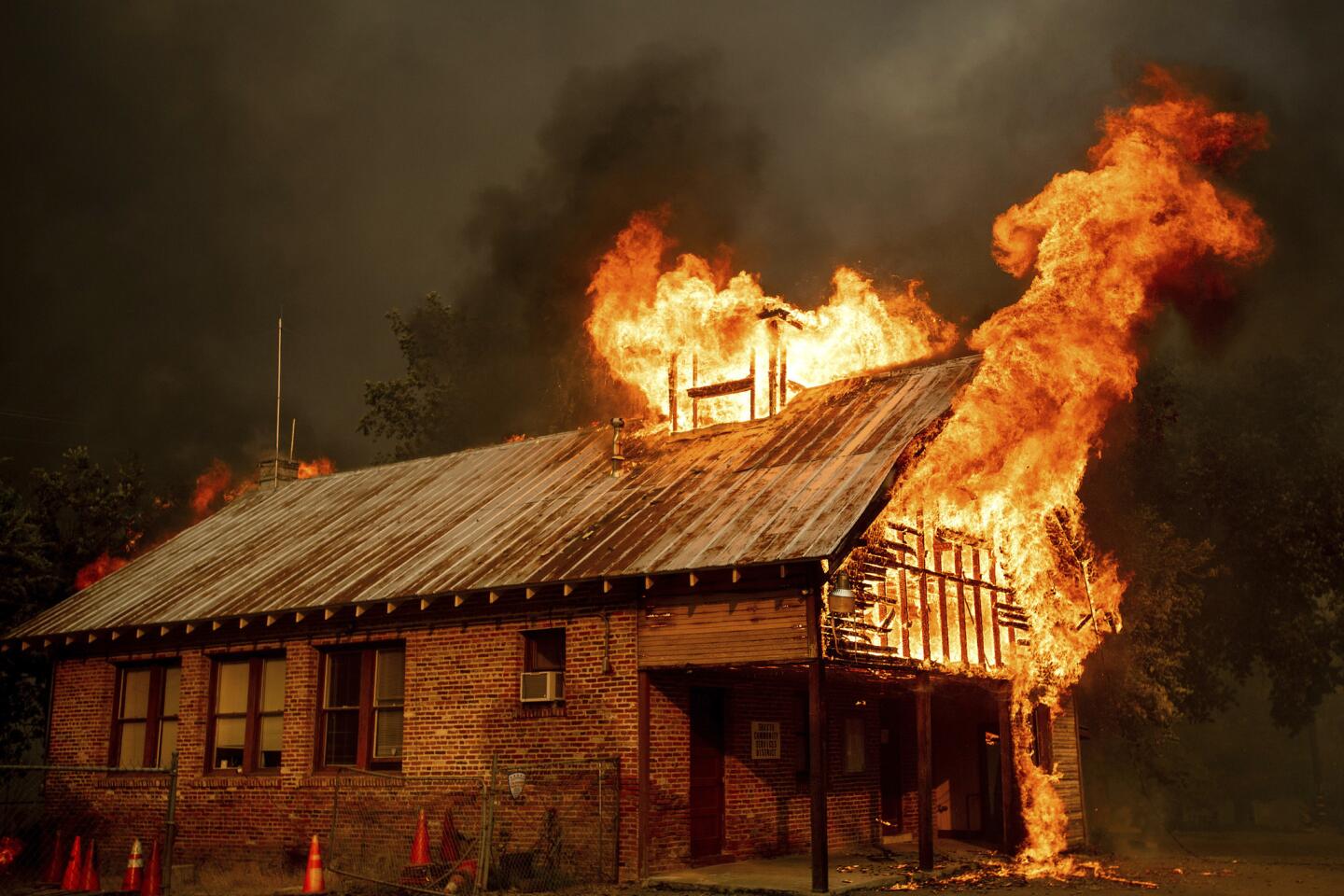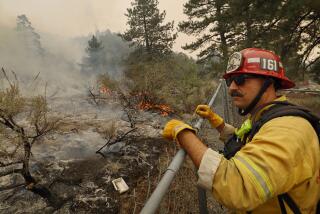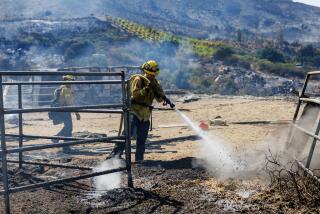California fires rage, and Gov. Jerry Brown offers grim view of fiery future
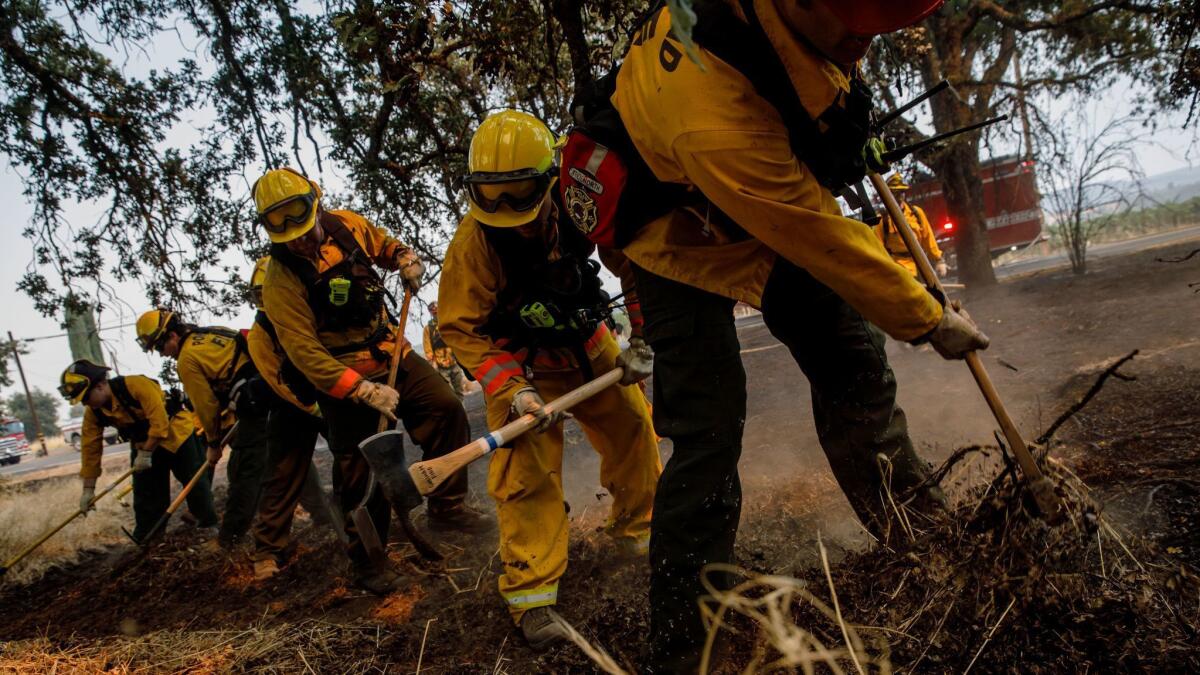
Reporting from YOSEMITE NATIONAL PARK — As fire crews struggled to gain containment on more than a dozen wildfires raging across California on Wednesday, Gov. Jerry Brown told reporters that large, destructive fires would probably continue and cost the state billions of dollars over the next decade.
“The more serious predictions of warming and fires to occur later in the century, 2040 or 2050, they’re now occurring in real time,” Brown said at a news conference at the state’s emergency operations center outside Sacramento.
State officials said more than 13,000 firefighters are on duty fighting 16 large fires that have burned a total of 320,000 acres and displaced more than 32,000 residents. Seventeen states have offered assistance to California during the last week, sending help from as far away as Maine and Florida. Though the state has the resources now to combat the large wildfires, fighting them and keeping people safe will become harder, Brown said.
“Things will get much tighter in the next five years as the business cycle turns negative and the fires continue,” Brown said.
Brown, who met with top fire and emergency response officials, said the state would spend whatever is needed to combat the blazes. But he said that current conditions are part of a long cycle that began with the rapid rise in greenhouse gases caused by human activity.
“People are doing everything they can, but nature is very powerful and we’re not on the side of nature,” he said. “We’re fighting nature with the amount of material we’re putting in the environment, and that material traps heat. And the heat fosters fires.”
New wildfires broke out Wednesday, including two threatening homes in El Dorado County, further straining the efforts of overloaded firefighters who are trying to keep up.
The Omega and Bumper fires sparked evacuations, with residents being directed to a shelter at the Diamond Springs Firefighters Memorial Hall at 3734 China Garden Road. The blazes had burned 120 acres west of Pilot Hill and east of Frenchtown, respectively, and officials were hitting flames with water-dropping aircraft.
The Eel fire, which broke out in a remote area Tuesday afternoon in northern Mendocino County, was 0% contained after burning 1,000 acres as of Wednesday evening, said Punky Moore, a spokeswoman with the U.S. Forest Service.
RELATED: Did you evacuate for a California wildfire? Tell us what you took with you »
The fire is traveling through quick-burning grass and oak in a rural area of rolling hills that can become steep and difficult to access, Cal Fire Deputy Chief Scott McLean said.
“It’s going to keep growing, hopefully not very much more, but we’ll find out,” McLean said Wednesday morning.
Another blaze that ignited Tuesday in Mono County north of Mammoth Lakes, called the Owens fire, was 312 acres and 80% contained as of Wednesday evening, authorities said.
The largest and deadliest of the wildfires currently burning in California is the Carr fire, which as of Wednesday evening had burned 121,049 acres and was 35% contained.
Fire crews have been battling the blaze in triple-digit heat. On Wednesday, however, forecasters said temperatures will return to normal, or close to it, by this weekend. Temperatures will reach the high 90s and humidity will hover around 20%, said Roy Skinner, a spokesman for the California Department of Forestry and Fire Protection.
“Any break in the weather is appreciated — we’re at 35% containment,” he said. “However, we don’t want people to be complacent, or on edge. But the fact is, this fire was started by just one little spark off a vehicle.”
Still, as a low-pressure system approaches from the west, the area could see shifting winds and gusts of up 30 mph, said National Weather Service meteorologist Tom Dang.
“This fire has a very unique personality,” said Jason Shanley, a spokesman for the Carr fire incident response. It’s been active at night, while a stubborn inversion layer has kept smoke low to the ground and hindered air support during the day. Conditions also spawned a fire tornado that ripped through parts of Redding. “Every day there’s a new challenge.”
The fire is now mostly burning on its western flank. On the eastern end, more and more of the 38,000 fire evacuees have been allowed to return to their homes — or what is left of them — in and around Redding.
The Carr fire has claimed six lives so far — those of a Redding fire inspector, a private bulldozer contractor and four civilians. It has also destroyed more than 1,500 structures, becoming the sixth most destructive wildfire in recorded California history.
MORE: Here’s where the Carr fire destroyed homes in Northern California »
“Steep terrain, erratic winds, and previously unburned fuels” on the western edge are challenging crews and increasing potential for spot fires, according to a Cal Fire incident report.
Containment is also increasing on the two fires in southern Mendocino County: As of Wednesday evening the Ranch fire was 15% contained after burning 64,514 acres, while the River fire had spread across 33,398 acres and was 38% contained.
“Low humidity, heat and wind will continue to challenge firefighters throughout the day” Wednesday, according to a Cal Fire incident report. Firefighters hope to fully contain both blazes by Aug. 7, according to the report. The low-pressure system will have a similar effect on the weather around these fires and on the Carr fire, Dang said.
Fire officials anticipate that the Ferguson fire near Yosemite National Park will intensify and spread farther into the central Sierra Nevada, a change in behavior caused largely by the shifting weather patterns expected in the next few days. As of Wednesday evening, the fire had scorched 63,798 acres and was 39% contained.
For the last several days, a high-pressure system has remained over the region. This has created an inversion, which acts like the lid on a pot of boiling water, keeping smoke from rising. As that pressure system lifts, and the inversion disappears, officials anticipate the fire will be fed fresh air and intensify.
Now in its 20th day, the Ferguson fire still threatens to ignite a massive number of dead trees that have been killed off by five years of drought and a bark beetle infestation.
“This fire has amazed me in its ability to do things I’ve never seen before,” fire behavior analyst Robert Scott, with California Interagency Incident Management Team 4, told a large group of firefighters gathered for the daily morning briefing Wednesday. “Be extremely careful down there.”
Safety remains a concern for firefighters. Two have died battling the fire, while another nine firefighters have been injured. Between Oakhurst and Ahwahnee, smoke hangs in the air, and poster boards strapped to road signs and mailboxes along California 49 have messages of support for firefighters, with many reading, “Stay safe!”
The features that make the region appealing to tourists and nature lovers — large canyons, tall ridge tops and plunging cliffs — have made the fire more than challenging for firefighters by creating unpredictable microclimates.
“Unless you’re out there on the ground, feeling the wind and listening to the needles crack underneath your feet,” Scott said, “you can’t give a really precise prediction of what the fire is going to do.”
During the news conference Wednesday, Brown said that he had spoken with Homeland Security Secretary Kirstjen Nielsen and that the federal government was an important partner in firefighting efforts.
The governor urged residents in fire-prone areas to stay on alert and said he planned to soon visit some of the state’s devastated communities. But he pointed out that major changes — from firefighting needs to environmental policy — are needed for the future.
“We’re going to have to adapt. We’re going to have to change our technology,” Brown said. “But in the meantime, we’re going to spend a hell of a lot of money and there’s going to be a lot of unpleasant events.”
Cosgrove reported from Yosemite, Sahagun from Redding, Myers from Sacramento and Kohli from Los Angeles. Times staff writer Alene Tchekmedyian contributed to this report.
Reach Sonali Kohli at Sonali.Kohli@latimes.com or on Twitter @Sonali_Kohli.
UPDATES:
7:45 p.m.: This story was updated with new fire figures.
7:00 p.m.: This story was updated with new fire figures.
5:10 p.m.: This story was updated with new fires in El Dorado County.
12:10 p.m.: This story was updated with comments from Brown.
This story originally published at 10:15 a.m.
More to Read
Sign up for Essential California
The most important California stories and recommendations in your inbox every morning.
You may occasionally receive promotional content from the Los Angeles Times.
